
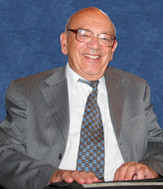 Академик Илья Иосифович Моисеев стал одним из трех лауреатов Демидовской премии 2012 года – самой престижной российской неправительственной премии, присуждаемой за вклад в науку.
Академик Илья Иосифович Моисеев стал одним из трех лауреатов Демидовской премии 2012 года – самой престижной российской неправительственной премии, присуждаемой за вклад в науку.
И.И. Моисеев – крупнейший ученый в области физической и координационной химии, один из создателей современного металлокомплексного катализа. Им разработаны новые принципы конструирования каталитических систем и на этой основе созданы высокоэффективные катализаторы важнейших промышленно значимых реакций. Его разработки стали основой промышленного метода получения ацетальдегида из этилена, синтеза муравьиной кислоты из СО и воды, производства пероксида водорода гидрированием кислорода, синтеза изопрена, он впервые занялся разработкой катализа наноразмерными частицами (гигантские кластеры палладия). На основе этих технологий построены и работают химические заводы. Академик Моисеев – вице-президент Российского химического общества им. Д.И. Менделеева, научный руководитель Института фундаментальных проблем природного газа при Российском университете нефти и газа им. И.М. Губкина, автор более 500 научных работ и 80 авторских патентов. Королевским химическим обществом Великобритании российский ученый назван Лектором Столетия как всемирно известный популяризатор науки.
Демидовская премия для ученых учреждена в 1832 году уральским промышленником Павлом Николаевичем Демидовым и присуждалась ежегодно до 1866 г. В 1993 году эта традиция была возрождена по инициативе Уральского отделения РАН. Общенациональные неправительственные Демидовские премии присуждаются за личный выдающийся вклад в развитие наук о Земле, физики и математики, экономики и предпринимательства, а также за вклад в гуманитарные науки. Учёные награждаются не за отдельный научный труд, а по совокупности работ. Будущие лауреаты определяются не на конкурсной основе, а путем опроса специалистов той или иной области. Окончательное решение выносят пять комиссий и комитет по премиям, в который входят крупнейшие ученые России. Средства на выплату премий поступают из Общенационального научного негосударственного Демидовского фонда.
Научный совет по катализу ОХНМ РАН и редакция Каталитического бюллетеня поздравляют Илью Иосифовича с присуждением высокой награды и желают ему новых творческих достижений!
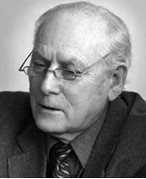 1 декабря 2012 г. исполнилось 80 лет крупному ученому и технологу, члену-корреспонденту РАН, профессору Сергею Степановичу Иванчёву.
1 декабря 2012 г. исполнилось 80 лет крупному ученому и технологу, члену-корреспонденту РАН, профессору Сергею Степановичу Иванчёву.
С.С. Иванчёв – ведущий в нашей стране специалист в области физикохимии полимеров, проводит фундаментальные поисковые и технологические исследования по новым высокоэффективным катализаторам полимеризации, по мицеллярному катализу и исследованию химических реакций в эмульсионных системах, по структурной модификации полимеров. Его исследовательские работы имеют четкую практическую направленность.
С.С. Иванчёв окончил химический факультет Ужгородского государственного университета в 1954 г., аспирантуру по кафедре физической химии Государственного университета им. И. Франко в г. Львове в 1957 г. После окончания аспирантуры работал в Одесском государственном университете им. И.И. Мечникова. С 1970 г. работает в г. Ленинграде (Санкт-Петербурге): 1970-1973 – заведующий лабораторией, 1973-1989 – заведующий отделом поисковых исследований, 1975-1982 – заместитель директора НИИ полимеризационных пластмасс, 1982-1989 – первый заместитель генерального директора Охтинского НПО (АООТ) “Пластполимер”, 1993-1998 – директор по научно-исследовательским работам АО “Пластполимер”.
В 1998 году принят на должность зав. отделом промышленных технологий синтеза сложных химических продуктов и полимеров ИК СО РАН. С 2003 г. по настоящее время является директором Санкт-Петербургского филиала ИК СО РАН.
С.С. Иванчёвым выполнены фундаментальные исследования в области радикальной олигомеризации и полимеризации различных мономеров в моногенных и гетерогенных системах с использованием радикальных инициаторов и катализаторов; установлены основные закономерности и особенности протекания реакции полимеризации с использованием полифункциональных инициаторов. С.С. Иванчёв впервые предложил и доказал полимеризационно-рекомбинационный характер формирования макромолекул в таких системах.
Им реализован синтез новых классов полифункциональных компонентов полимеризационных систем (инициаторов, инициаторов-наполнителей, инициаторов-эмульгаторов, инициаторов-мономеров, бифункциональных катализаторов), использованных в дальнейшем для получения реакционноспособных олигомеров, полимеров и полимерных композиций.
Под руководством С.С. Иванчёва разработаны новые оригинальные способы получения новых латексов с управляемой морфологией для покрытий с улучшенными свойствами, латексов с полыми частицами для беспигментных покрытий, вибродемпфирующих полимерных композиций, доведенных до внедрения и используемых в различных отраслях промышленности.
Основополагающие результаты получены в области циглеровского катализа. Разработанная под его руководством технология получения α-бутена реализована на двух заводах России и проданы лицензии. Успешно ведутся исследования по постметаллоценовым катализаторам полимеризации и сополимеризации олефинов.
В работах С.С. Иванчёва с сотрудниками выполнены широкие исследования особенностей сополимеризации тетрафторэтилена (ТФЭ) и перфтор(3,6-диокса-4-метил-7-окта)сульфонилфторида (ФС-141) в водной эмульсии. Разработан процесс получения Нафиона, характеризующегося однородностью состава, оптимальной эквивалентной массой и высокой степенью превращения дорогостоящего сульфомономера. Полученные по данной технологии материалы позволяют формировать протонопроводящие мембраны со свойствами, не уступающими стандартным образцам Нафиона. Разработанная технология проверена на опытно-промышленной установке на базе ФГУП РНЦ “Прикладная химия”, получено более 7 кг сополимера.
Разработан Силикон-гидрогелевый бифазный материал для мягких контактных линз. Материал представляет собой взаимопроникающие сетки на основе полисилоксанов и полимерных гидрогелей на основе n-винилпирролидона и n,n-диметилакриламида. Высокая кислородопроницаемость материала, сочетающаяся с гидрофильными свойствами, определяет возможность его применения для изготовления мягких контактных линз (МКЛ) длительного непрерывного ношения (до 1 мес.). Изготовлены экспериментальные образцы МКЛ и испытаны на животных. По критериям гипоксических осложнений и токсико-аллергических реакций разработанный материал находится на уровне лучших зарубежных образцов, но в отличие от последних имеет более перспективную технологию получения. Полученные данные представляют большой теоретический и практический интерес.
Автор шести монографий, более 400 печатных работ, имеет более 250 изобретений и патентов.
С.С. Иванчёву присвоены звания Заслуженный деятель науки и техники РФ (1992), Почетный химик РФ (1995). Он является Лауреатом премии Совета Министров СССР (1989), премии им. акад. Каргина Президиума РАН (1993). Награжден золотой медалью им. Б.П. Жукова РАН (2003). В 2008 г. С.С. Иванчёву присуждена Премия имени Д.И. Менделеева за цикл работ “Разработка новых катализаторов, полифункциональных полимеризационных систем, технологий получения наноструктурированных латексных полимерных систем, покрытий специального назначения, контактных линз длительного ношения и мембран для топливных элементов.
Большое место в деятельности С.С. Иванчёва занимает организационная работа. Был председателем Одесского областного правления общества "Знание" и областного отделения Всесоюзного химического общества им. Д.И. Менделеева (1965-1970), член правления Ленинградского (Санкт-Петербургского) отделения общества "Знание" с 1972 г., член экспертного совета Высшей аттестационной комиссии при правительстве с 1972 г. Большую и плодотворную работу проводит С.С. Иванчёв, являясь членом редколлегий журналов "Успехи химии", “Журнал прикладной химии”, “Химическая промышленность”, Председателем секции химии Северо-Западного отделения РАН, членом бюро Научного совета РАН по высокомолекулярным соединениям, Научного совета РАН по катализаторам, бюро Президиума правления Российского химического общества им. Д.И. Менделеева.
Научный совет по катализу ОХНМ РАН и редакция Каталитического бюллетеня поздравляют Сергея Степановича с юбилеем, желают ему дальнейших успехов на благо российской науки!
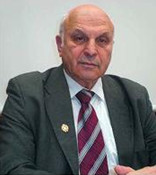 27 декабря 2012 г. исполнилось 75 лет известному специалисту в области промышленного катализа, Заслуженному химику России, профессору Евгению Зиновьевичу Голосману.
27 декабря 2012 г. исполнилось 75 лет известному специалисту в области промышленного катализа, Заслуженному химику России, профессору Евгению Зиновьевичу Голосману.
В течение 50 лет Е.З. Голосман работает в Новомосковском филиале государственного института азотной промышленности и продуктов органического синтеза (НФ ГИАП, НИАП, “НИАП-КАТАЛИЗАТОР”), куда он пришел в 1962 г. после окончания химико-технологического института им. Д.И. Менделеева. За эти годы Евгений Зиновьевич создал и возглавил сектор (1966 г.), лабораторию (1971 г.), а затем (1978 г.) хорошо оснащенный приборами и установками большой отдел физико-химических и аналитических исследований, стандартизации и качества в институте, в котором до недавнего времени работало более 1800 человек, и который являлся одним из крупнейших центров страны по разработке, исследованию и наработке промышленных катализаторов. С 2011 г. – главный научный сотрудник “НИАП-КАТАЛИЗАТОР”.
Евгений Зиновьевич избран академиком Международной Академии экологии и Российской Инженерной Академии, с 1996 г. работает профессором кафедры технологии неорганических веществ Новомосковского института РХТУ
Под руководством Е.З. Голосмана и при его непосредственном участии создано новое научное направление – химия приготовления оксидных и металлоксидных цементсодержащих катализаторов для широкого круга органических, неорганических и экологических процессов. В соответствии с разработанной малоотходной технологией организовано промышленное производство цементсодержащих катализаторов в катализаторном цехе “НИАП-КАТАЛИЗАТОР”, катализаторном производстве Дорогобужского ЗАУ и др.
Е.З. Голосман принимал участие в испытаниях и внедрении в промышленность ряда разработанных катализаторов на химических, металлургических, машиностроительных, нефтехимических заводах. В первую очередь, для процессов метанирования, получения защитных атмосфер, синтеза бутиловых спиртов, анилина, низкотемпературной конверсии оксида углерода и др. на Новомосковской АК “Азот”, “Салаватнефтеоргсинтез”, Новолипецком, Магнитогорском, Белорецком, Мариупольском меткомбинатах, Запсибе, Омском заводе “Химпром”, Новочеркасском заводе синтетических спиртов, Черкасском, Придонском, Северодонецком, Череповецком, Гродненском, Кирово-Чепецком, Березниковском, Щекинском, Одесском, Невинномысском, Тольяттинском, Куйбышевском, Дорогобужском азотных заводах, “Нижнекамскнефтехим”, “Ангарскнефтехим”, Кировоградском заводе “Пишмаш”, заводе “Микропровод” (Подольск), Северском, Первоуральском трубных заводах, Череповецком сталепрокатном, Волжском и Нижегородском автомобильных заводах, телевизионном заводе “Хроматрон”, Львовском, Ленинградском ювелирных заводах, “Тулачермет”, Казанском авиационном заводе, Новомосковском гипсовом комбинате, часовом заводе (Москва), “Хром” (Муром), Подольском цементном заводе, Волжском “Оргсинтез”, комбинате “Норильскникель”, Ефремовском заводе СК, “Аромасинтез” (Калуга), Днепровской (г. Киев) и Юго-Западной (г. Москва) водопроводных станциях, заводе по переработке автопокрышек (Таиланд), РКЦ им М.В. Хруничева, “Чувашкабель” (Чебоксары), Майли-Сайском электроламповом заводе в Киргизии, Ленинабадском комбинате редких металлов (г. Чорух-Дайрон, Таджикистан), Узбекском металлургическом заводе, адронном коллайдере в Швейцарии и др.
Можно отметить за последние годы разработку, освоение технологии, организацию производства и внедрение в промышленность катализаторов разложения озона серии ГТТ и ГТ, внедренных в сотнях установок в химической, медицинской, пищевой и др. отраслях, создание нового высокоэффективного катализатора метанирования НКМ-7, катализаторов очистки газов от закиси азота, катализаторов получения водородсодержащего газа для топливных элементов. Разработанные и синтезированные неплатиновые катализаторы серии НТК-10, КДА, НКМ, НКО, ГТТ, ГТ, ФК, КЦ, НТК-10-7 и др. внедрены и эксплуатируются на 170 заводах и организациях РФ, СНГ и дальнего зарубежья.
Профессор Е.З. Голосман внес существенный вклад в подготовку научных кадров: под его руководством выполнено более 200 научно-исследовательских дипломных работ студентов, защищено десять кандидатских диссертаций. В настоящее время является научным руководителем нескольких кандидатских диссертаций и научным консультантом двух докторских диссертаций. Автор более 600 публикаций, в том числе 300 статей, трех единственных в мире монографий по цементсодержащим катализаторам, 10 брошюр, 90 изобретений и патентов РФ, Международных патентов, 300 тезисов докладов Международных и Российских конференций и др.
Евгений Зиновьевич активно занимается научно-организационной работой. В настоящее время – вице-президент Тульского областного правления Союза научных и инженерных общественных объединений (ОО СОЮЗ НИООТО), зам. председателя РХО им. Менделеева Тульской области, член центрального правления РХО им. Менделеева, член Совета ассоциации научных и технических общественных объединений Тульской области им. С.И. Мосина, первый зам. председателя научно-технического совета “НИАП-КАТАЛИЗАТОР”. Член редколлегии журнала “Катализ в промышленности” и бюллетеня “Химия в России”. Занесен в Книгу Почета НИАП, награжден Почетным Знаком Губернатора Тульской области “Общественное признание”, имеет другие награды.
Научный совет по катализу ОХНМ РАН и редакция Каталитического бюллетеня поздравляют Евгения Зиновьевича с юбилеем, желают ему крепкого здоровья и успешной работы!
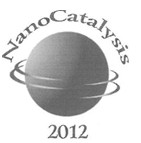 |
Симпозиум
|
Симпозиум “Современные проблемы нанокатализа” с международным участием, организованный Институтом физической химии им. Л.В. Писаржевского НАН Украины и Ужгородским национальным университетом, состоялся 24–28 сентября 2012 г. в Ужгороде.
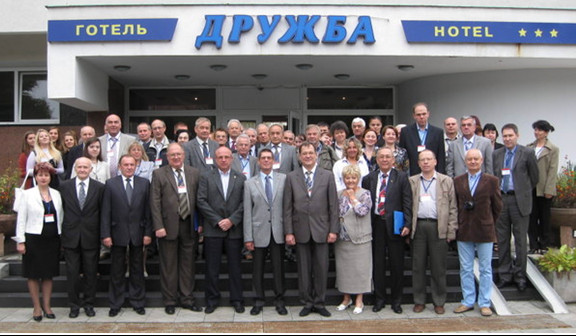
Важнейшей задачей нанокатализа является создание теоретических и экспериментальных основ синтеза и исследования каталитических материалов с заданными свойствами. В связи с этим особый интерес для нанокатализа представляют размерные эффекты и тонкая структура наносистем, изучение которых обусловлено последними достижениями в области современных инструментальных методов исследования веществ на микроуровне: электронной микроскопии высокого разрешения, просвечивающей электронной микроскопии, атомно-силовой микроскопии, а также спектральных, магнитных, дифракционных и других методов, в том числе в условиях протекания химических реакций. На базе высокотехнологичных наноматериалов могут быть созданы принципиально новые конкурентоспособные каталитические процессы, в том числе основанные на использовании возобновляемого сырья.
На симпозиуме было проведено обсуждение современного состояния и развития нанокатализа по следующим направлениям:
Были обсуждены результаты исследований размерных эффектов в катализе, синтеза и физико-химических исследований нанофазных катализаторов, включая полимер-иммобилизованные кластеры и наночастицы, использования нанофазных материалов в гетерогенно-каталитических окислительно-восстановительных и кислотно-основных процессах, фото- и электрокатализе, нанокатализ в растворах и применение нанокатализаторов в промышленных процессах.
На симпозиуме были представлены материалы 91 доклада, отображающие научные исследования, которые проводятся в ведущих научных центрах Украины, России, Казахстана, Азербайджана, Узбекистана, Франции, Венгрии и других стран, направленные на развитие и углубление современных представлений о каталитических свойствах наноматериалов, механизме и элементарных актах химических превращений, протекающих с их участием, а также на создание новых каталитических технологий на их основе. В работе симпозиума приняли участие 3 академика, 5 членов-корреспондентов, более 30 докторов наук из 29 научно-исследовательских институтов, университетов и научно-производственных предприятий. 25 устных и стендовых докладов было представлено молодыми учеными.
Тематика 12 пленарных, 39 устных и 42 стендовых докладов охватывала основные направления исследований в области современных проблем нанокатализа. Направление “Размерные эффекты в катализе” было представлено докладами, в которых обсуждаются различные аспекты проявления электронного и геометрического факторов в катализе. Продемонстрировано, что, несмотря на взаимозависимость обоих факторов, вклад электронного фактора является определяющим преимущественно для частиц металлов и оксидов металлов с характерным размером менее 10 нм, для которых энергии электронных переходов в активированном комплексе являются размерозависимыми величинами. Другими важными факторами, позволяющими улучшить свойства нанодисперсных катализаторов, являются оптимальное расположение и окружение наночастиц на поверхности носителя. Серия докладов была посвящена физико-химическим методам исследования наноразмерных систем. В рамках кинематической теории рассеяния рентгеновских лучей на новом уровне возрожден метод расчета рентгеновских дифрактограмм, который позволяет получить информацию об атомной структуре, форме и размере наночастиц, проверить гипотезы о наличии деформаций, дефектов упаковки и других особенностях строения высокодисперсных и наноструктурированных систем. Направление “Дизайн и получение наноматериалов для катализа” было представлено работами, в которых обсуждаются результаты исследований каталитических свойств углеродных и углерод-содержащих материалов, диоксида циркония, диоксида титана, полимер-иммобилизованных кластеров, наноструктурированных блочных систем. Были также обсуждены фундаментальные и прикладные аспекты применения механохимии для синтеза нанофазных каталитических систем. Направление “Нанофазные материалы в гетерогенно-каталитических процессах” включало широкий спектр работ, в которых продемонстрированы возможности применения нанокатализаторов в реакциях восстановления оксидов азота, окисления монооксида углерода, окислительного превращения метана и более сложных углеводородов, превращения метанола, этанола и биоэтанола, гидрирования и дегидрирования органических соединений, окисления аммиака, кетонизации карбоновых кислот, синтеза олефинов и прочих важных каталитических реакций, а также в электрокаталитических и фотокаталитических процессах. Значительное внимание было уделено всестороннему обсуждению перспектив использования наноматериалов в промышленности представителями научно-исследовательских институтов, высших учебных заведений и научно-производственных организаций: Санкт-Петербургского филиала Института катализа СО РАН им. Г.К. Борескова, Технологического института Восточноукраинского Национального университета им. В. Даля, Национального технического Университета “Харьковский политехнический институт”, ООО “НИАП-КАТАЛИЗАТОР”, ОАО “Максам-Чирчик”, Узбекского научно-исследовательского химико-фармацевтического института им. А. Султанова (УзКФИТИ) и др.
Симпозиум продемонстрировал высокий уровень исследований и разработок в области нанокатализа, соответствующий современным мировым достижениям в этой области. Было подчеркнуто большое значение государственных и академических научно-технических программ Украины, России и других стран СНД по наноматериалам, конкурсов НАН Украины и МОН Украины, а также совестных конкурсов НАН Украины и МОН Украины с РАН и РФФИ, ориентированных на проведение фундаментальных исследований и продвижение полученных результатов в практику. Вместе с тем отмечалось, что объем финансирования проектов в рамках этих конкурсов явно недостаточен и не соответствует реальным масштабам затрат в современных инновациях, так же как и обеспечение новейшим оборудованием исследований в этой перспективной области.
Проведение симпозиума способствовало более тесному сотрудничеству специалистов в области катализа, обмену опытом и формулированию перспективных направлений нанокатализа с целью разработки нового поколения катализаторов, а также координации проведения научных исследований в этой новой быстро развивающейся области. На симпозиуме обсуждены острые, актуальные проблемы нанокатализа и намечены пути дальнейшего развития научных исследований, направленные на решение как фундаментальных, так и прикладных задач.
Оргкомитету предложено представить избранные материалы симпозиума для опубликования в журнале “Теоретическая и экспериментальная химия”.
Участники симпозиума, учитывая стремительное развитие актуальных исследований в области нанокатализа, а также отмечая необходимость координирования деятельности разработчиков и производителей нанокатализаторов, считают целесообразным проведение симпозиума по проблемам нанокатализа один раз в два-три года.
В.Г. Кошечко
академик НАН Украины, председатель оргкомитета

22-25 октября 2012 г.
Санкт-Петербург, Россия
Во время работы IX Международной конференции “Механизмы каталитических реакций”, которая прошла под эгидой Европейской федерации каталитических обществ, EFCATS, участники имели возможность прослушать 5 пленарных лекций, 9 ключевых лекций, 55 устных докладов, 23 устных доклада молодых ученых и обсудить 110 стендовых докладов по направлениям: теоретические основы катализа, механизмы гомогенного катализа, механизмы гетерогенного катализа, каталитическая переработка возобновляемых источников энергии, электрокатализ, фотокатализ, биокатализ.
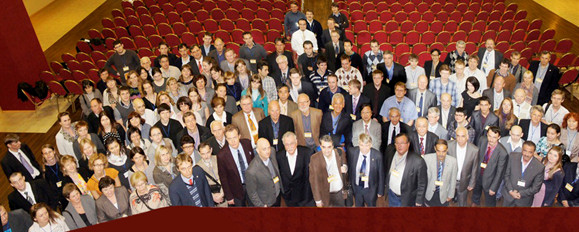
Организаторами конференции выступили Институт катализа СО РАН, Московский государственный университет, Институт органической химии РАН при содействии Санкт-Петербургского Научного центра РАН. Финансовая поддержка от Российского фонда фундаментальных исследований, Официального спонсора конференции ОАО “СИБУР Холдинг” и компаний ООО “Брукер”, ЗАО “Донау Лаб. Москва” и ООО “Промэнерголаб” позволила организаторам провести конференцию на достойном уровне. В конференции приняли участие 160 российских и 80 зарубежных ученых из 27 стран мира.
По сравнению с предыдущими конференциями, которые прошли в Москве (1974, 1979, 1986, 1990, 2002 гг.), Санкт-Петербурге (2006 г.) и Новосибирске (1982, 2009 гг.), IX Конференция значительно расширила географию стран-участниц: Россия – 153 участника, Германия – 20, Польша – 12, Сербия – 6, Франция – 5, Венгрия – 5, США – 5, Япония – 4, Испания – 4, Италия – 3, Румыния – 3, Казахстан – 3, Турция – 4, Бельгия – 3, Хорватия – 2, Финляндия – 2, Англия – 2, Азербайджан – 2; по одному участнику делегировали Австрия, Болгария, Нидерланды, Таиланд, Индия, Швейцария, Саудовская Аравия, Португалия. Приятно отметить и возросшее количество устных и стендовых докладов от молодых российских и зарубежных участников – 65.
 Научную сессию открыла пленарная лекция проф. Alexis T. Bell (University of California, Berkeley, USA) “Выявление механизма гетерогенных каталитических реакций путем сочетания экспериментальных и теоретических исследований”. В лекции подчеркивается необходимость всестороннего исследования кинетики каталитической реакции в сочетании с комплексом современных физико-химических методов исследования поверхности in situ (operando). Дополнительным подтверждением выдвигаемого механизма реакции служат теоретические исследования первооснов параметров реакции для предлагаемых элементарных стадий. Сочетание экспериментальных и теоретических исследований позволяет надежно установить механизм реакции, что убедительно показано на примерах термического дегидрирования алканов, карбонилирования олефинов и эфиров и электрохимического расщепления воды.
Научную сессию открыла пленарная лекция проф. Alexis T. Bell (University of California, Berkeley, USA) “Выявление механизма гетерогенных каталитических реакций путем сочетания экспериментальных и теоретических исследований”. В лекции подчеркивается необходимость всестороннего исследования кинетики каталитической реакции в сочетании с комплексом современных физико-химических методов исследования поверхности in situ (operando). Дополнительным подтверждением выдвигаемого механизма реакции служат теоретические исследования первооснов параметров реакции для предлагаемых элементарных стадий. Сочетание экспериментальных и теоретических исследований позволяет надежно установить механизм реакции, что убедительно показано на примерах термического дегидрирования алканов, карбонилирования олефинов и эфиров и электрохимического расщепления воды.
В пленарной лекции акад. В.Н. Пармона (Институт катализа СО РАН, Новосибирск) “Термодинамика работающего катализатора: некоторые подходы и решения” анализируются возможности весьма редко используемой в гетерогенном катализе неравновесной термодинамики в приложении к работающему катализатору. Рассматривается сверхнизкая температура плавления нанесенных металлических катализаторов при получении углеродных нановолокон, полуколичественное описание размерного эффекта в металлических катализаторах, возможность изменения стационарного состояния фазы активного компонента работающего катализатора путем изменения состава реакционной среды.
Лекция проф. Lawrence Que, Jr. (University of Minnesota, USA) “Био-инспирированное окисление углеводородов негемовыми железными катализаторами” была посвящена стереоселективному дигидроксилированию олефинов пероксидом водорода в присутствии негемовых комплексов железа(II).
Проф. V.V. Fokin (The Scripps Research Institute, La Jolla, Cali-fornia, USA) прочел лекцию “Катализ и сложность: от механизма к действию”, в которой рассказал о превращении алкинов в гетероциклы и в другие разнообразные молекулы со связью углерод-гетероатом.
Проф. E.V. Kondratenko (Leibniz-Institut für Katalyse, Rostock, Germany) в лекции “От механизма и кинетики гетерогенных каталитических реакций к регулированию каталитических характеристик” подчеркнул необходимость сочетания экспериментальных и теоретических исследований для разработки методов регулирования свойств катализаторов.
Следует особо отметить лекцию чл.-корр. РАН В.И. Бухтиярова, посвященную 145-летию со дня рождения выдающегося химика и организатора химической индустрии в России и США академика АН СССР Владимира Николаевича Ипатьева. В.Н. Ипатьев вошел в историю мировой науки как один из основоположников каталитического органического синтеза, создатель теории и практики получения высокосортных бензинов, оставивший свое имя в технологических схемах производства взрывчатых веществ и соединений высокой энергии (“реакция Ипатьева”), исследовательских методах анализа (“бомба Ипатьева”) и др. Эти достижения выдержали испытание временем и до сих пор используются нефтеперерабатывающими и нефтехимическими предприятиями.
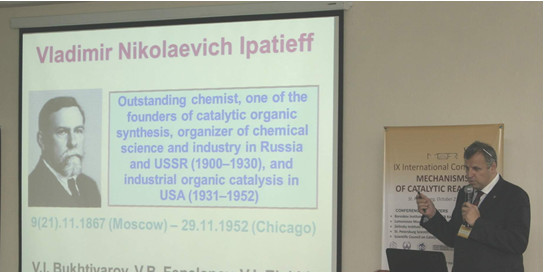
Проф. R. van Santen (Institute for Complex Molecular Systems, Eindhoven University of Technology, The Netherlands) прочитал ключевую лекцию по теме “Механизм реакции Фишера-Тропша”. Механизм данного промышленного процесса был изучен с использованием компьютерного моделирования и кинетических экспериментов. Было показано, что механизм реакции неразрывно связан со структурой активных центров кобальтовых и рутениевых катализаторов.
В ключевой лекции проф. K.M. Neyman (Institució Catalana de Recerca i Estudis Avancats, Barcelona, Spain) были рассмотрены структурные особенности наноструктурированных катализаторов различных типов. Было показано, что для предсказания свойств катализаторов необходимо рассматривать их не как идеальные кристаллы, а учитывать дефектность материалов и размерные эффекты, что может быть достигнуто с помощью компьютерного моделирования поверхности катализаторов.
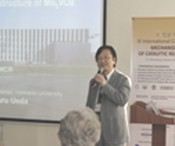 Проф. W. Ueda (Catalysis Research Center, Hokkaido University, Sapporo, Japan) в своей ключевой лекции затронул проблемы изучения механизма реакции каталитического селективного окисления с использованием молибден-ванадиевых систем. Были рассмотрены каталитические свойства систем Mo3VOx и показано, что селективность и активность данных систем напрямую связаны с пространственной структурой, особое влияние оказывает относительное расположение катионов ванадия и молибдена в плоскости a-b элементарной ячейки. Следует отметить, что среди ключевых лекций доклад профессора Ueda привлек наибольшее внимание слушателей.
Проф. W. Ueda (Catalysis Research Center, Hokkaido University, Sapporo, Japan) в своей ключевой лекции затронул проблемы изучения механизма реакции каталитического селективного окисления с использованием молибден-ванадиевых систем. Были рассмотрены каталитические свойства систем Mo3VOx и показано, что селективность и активность данных систем напрямую связаны с пространственной структурой, особое влияние оказывает относительное расположение катионов ванадия и молибдена в плоскости a-b элементарной ячейки. Следует отметить, что среди ключевых лекций доклад профессора Ueda привлек наибольшее внимание слушателей.
Проф. Dmitry Yu. Murzin (Åbo Akademi University, Turku, Finland) прочел ключевую лекцию по теме “Механистические подходы к гидрированию и окислению сахаров”. Было рассмотрено влияние различных параметров процессов окисления арабинозы, глюкозы и галактозы в многоатомные органические кислоты – ценные химические продукты – на селективность и скорость реакции. Также были рассмотрены особенности компьютерного моделирования механизма гидрирования сахаров в многоатомные спирты.
Ключевая лекция проф. G. Rupprechter (Institute of Materials Chemistry, Vienna University of Technology, Austria) была посвящена изучению механизмов каталитических реакций с использованием комплекса методов: спектроскопии поверхности катализатора in situ, микроскопии поверхности, кинетических измерений. Было показано, что использование совокупности физико-химических и каталитических методов позволяет предложить достоверные модели каталитических превращений на поверхности.
Проф. Е. Özensoy (Bilkent University, Ankara, Turkey) в ключевой лекции “Понимание термических и фотокаталитических путей аккумулирования оксидов азота на молекулярном уровне: от передовых практических катализаторов к модельным планарным катализаторам” затронул особенности механизма аккумулирования и превращений оксидов азота на композитных катализаторах BaO/BaO2/Pt(111) и BaOx/TiO2/Pt(111). Была показана возможность проведения реакции фотокаталитического окисления оксидов азота при комнатной температуре с использованием катализаторов состава X/TiO2/Al2O3 (X = Li, Na, K, Cs, Ca, Sr или Ba).
Ключевая лекция чл.-корр. РАН В.П. Ананикова (ИОХ РАН, Москва) была посвящена изучению механизмов образования связей углерод-углерод и углерод-гетероатом в органическом синтезе при использовании в качестве катализаторов комплексов переходных металлов. Были рассмотрены особенности влияния строения металлических активных центров на каталитические свойства комплексов переходных металлов.
Проф. М. Costas (Universitat de Girona, Spain) в своей лекции затронул вопросы изучения механизма восстановительного и окислительного разрыва связи кислород-кислород в реакциях органического синтеза и в живых системах. Было произведено сравнение функционирования синтетических катализаторов на основе комплексов переходных металлов и природных катализаторов, таких как кластеры, входящие в систему фотосинтеза растений.
Ключевая лекция д.х.н. Е.П. Талзи (Институт катализа СО РАН, Новосибирск) была посвящена изучению механизма селективного окисления на железо- и марганецсодержащих металлокомплексных катализаторах методом ядерного магнитного резонанса. С помощью метода ЯМР были найдены и охарактеризованы активные интермедиаты энантиоселективного окисления.
Работу секции 1 “Теоретические проблемы катализа” открыл доклад д.х.н. А.Ю. Стахеева (ИОХ РАН, Москва) “Размерный эффект в окислении метана на благородных металлах: сравнение платины и палладия”, в котором различие каталитических свойств объясняется с позиций различия кинетики реакции. Проф. N. Rösch (Университет Мюнхена, Германия) в докладе “Моделирование процессов риформинга биомассы в водной среде” рассказал об изучении методом DFT конверсии пропанола на гранях платины в водород и алканы.
К.х.н. В.А. Наслузов (ИХХТ СО РАН, Красноярск) рассказал об активации кислорода на микрокластерах серебра, нанесенных на силикагель и оксид алюминия. В работе использованы расчеты методом периодического псевдо-потенциального DFT. К.х.н. Д.А. Пичугина (МГУ, Москва) представила доклад “Теоретические воззрения на каталитическую активность биметаллических катализаторов на основе золота”, в котором рассмотрен возможный механизм образования пероксида водорода и изомеризации углеводородов. П.С. Андрикопулос (Университет Лиона, Франция) в докладе “Окисление алканов: дизайн катализаторов на силикагеле” рассказал о расчетах методом DFT механизма реакции окисления перекисью водорода на оксожелезных центрах. В докладе д.х.н.
На устной секции 2 обсуждались вопросы механизмов гомогенных каталитических реакций.
Лекция д.х.н. К.П. Брылякова (Институт катализа СО РАН, Новосибирск) была посвящена изучению механизма полимеризации олефинов на титансодержащих металлокомплексных катализаторах методом ядерного магнитного резонанса. Проф. J.M. Aubry (Université de Lille Nord de France, Villeneuve d’Ascq CEDEX, France) прочел лекцию по теме “Механизм катализируемого природными полифенолами восстановления кислорода диэтилгидроксиламином”. Проф. Н.В. Белкова из Института элементоорганических соединений РАН (Москва) в своем докладе рассмотрела особенности изучения механизма гидрирования кетонов на металлокомплексных катализаторах методами ЯМР и УФ спектроскопии. Проф. Z.H. Zhou (State Key Laboratory for Physical Chemistry of Solid Surfaces, Xiamen University, China) рассказал о механизме конверсии фенола на титановых катализаторах. Проф. С.Г. Злотин (Институт органической химии РАН, Москва) рассмотрел аспекты изучения механизмов реакций с хиральными металлокомплексными катализаторами методом масс-спектроскопии. Наибольшее внимание участников этой секции привлек доклад д.х.н. К.П. Брылякова.
В самой крупной секции 3 “Механизмы гетерогенных каталитических реакций” было представлено 32 доклада.
Проф. В.А. Садыков (Институт катализа, Новосибирск) рассказал о механизме углекислотной конверсии метана на нанокристаллических допированных церий-циркониевых оксидах с нанесенными металлами. Проф. К. Досумов (Институт проблем горения, Алматы, Казахстан) прочитал доклад “Механизм окислительной конверсии метана”. Доклад S. Specchia (Университет Генуи, Италия) был посвящен механизму старения палладиевых катализаторов сжигания метана под действием соединений серы. A. Masalska (Wrocław University of Technology, Faculty of Chemistry, Poland) рассказала об эффекте взаимодействия металл – носитель в никелевых катализаторах превращения н-парафинов. К.х.н. В.Ю. Бычков (Институт химической физики, Москва) рассмотрел влияние карбонизации никелевых катализаторов на углекислотную конверсию метана. К.ф.-м.н. Е.А. Лашина (Институт катализа, Новосибирск) представила доклад о математическом моделировании самоосцилляции при окислении метана на никеле. К.х.н. А.Р. Чолач (Институт катализа, Новосибирск) рассказал о простой модели осцилляции в реакции (NO + H2) на благородных металлах. К.х.н. Д. Землянов (Университет Пердью, США) обсудил необычное явление внедрения кислорода и углерода в палладиевые частицы в процессе окисления метана и этилена. Доклад A.I. Frenkel (Yeshiva University, USA) был посвящен изучению модельных и реальных катализаторов рентгеновским in situ методом. А.А. Цыганенко (Институт физики, С.-Петербург) рассказал о применении ИК-Фурье спектроскопии с Фурье преобразованием для исследования механизма гетерогенных каталитических реакций.
К.ф.-м.н. В.В. Каичев (Институт катализа, Новосибирск) представил доклад “Разложение и окисление метанола на платине и палладии: in situ РФЭС и масс-спектрометрическое исследование”. Доклад D.A. Pena (Université de Lille 1, France) был посвящен изучению углеродистых отложений и проблеме дезактивации нанесенных на оксид алюминия кобальтовых катализаторов Фишера-Тропша в суспензионном реакторе. К.В. Ковтунов (Международный томографический центр, Новосибирск) рассказал о применении пара-водорода для изучения механизмов гетерогенных реакций гидрирования. Доклад N. Dürr (Technische Universität Darmstadt, Germany) посвящен исследованию механизма селективного окисления акролеина в акриловую кислоту на смешанных Mo-V-W оксидных катализаторах. Скорпионатные комплексы золота, закрепленные на наноразмерном силикагеле, использовались в гибридных катализаторах оксо-функциализации углеводородов, о чем шла речь в докладе G.S. Mishra (University of Trás-os Montes and Alto Douro, Portugal).
Д.х.н. Е.С. Локтева (Химфак МГУ, Москва) рассказала о катализе органических реакций с водородом на графене, активированном наличием дефектов и слоем металла. Доклад L. Piccolo (Institut de Recherches sur la Catalyse et l’environnement de Lyon, France) посвящен изучению механизма раскрытия кольца и уменьшения кольца тетралина на бифункциональных иридиевых катализаторах, нанесенных на алюмосиликат. В докладе P. Mierzinski (Lodz University of Technology, Poland) проведено сравнительное изучение различных металлов, нанесенных на цинк-алюминиевую шпинель, в процессе получения водорода при паровом риформинге метанола. Доклад проф. T. Tatsumi (Tokyo Institute of Technology, Japan) был посвящен изучению реакционной способности метокси-групп в реакции превращения метанола в олефины на цеолитах H-ZSM-5. К.х.н. И.В. Мишаков (Институт катализа, Новосибирск) рассказал о процессе дехлорирования хлор-углеводородов на массивных сплавных никелевых катализаторах. Доклад проф. P. Selvam (Indian Institute of Technology Madras, India) посвящен дегидратации глицерина на гетерополикислотах, нанесенных на мезопористый силикагель.
Д.х.н. М.Ю. Смирнов (Институт катализа, Новосибирск) рассказал об использовании модельных систем для изучения методом РФЭС взаимодействия нанесенных металлических катализаторов с газообразной реакционной средой. М.С. Гаврилов (Институт катализа, Новосибирск) представил доклад о каталитической очистке выхлопных газов на сплавных Pd-Rh катализаторах. Доклад к.х.н. Е.Л. Вовка (Институт катализа, Новосибирск) посвящен изучению активных центров Ce-O-Pt катализаторов разложения оксидов азота. Влияние источника водорода на механизм гидрогенолиза глицерина в 1,2-пропандиол рассмотрено в докладе J. Requies (University of the Basque Country, Spain). Структура аллильных интермедиатов, образующихся из олефинов на оксиде цинка, выявлена с помощью твердотельной ЯМР спектроскопии в докладе к.х.н. А.А. Габриенко (Институт катализа, Новосибирск). В докладе проф. Л.Г. Брука (Институт тонкой химической технологии, Москва) изучен механизм окисления СО на катализаторах PdCl2-CuCl2/Al2O3. Проф. I.L. Margitfalvi (Combitech-Nanotech Kft., Hungary) представил доклад по энантиоселективному гидрированию активированных кетонов в присутствии платиновых катализаторов. Доклад проф. M. Jacquemin (Université Catholique de Louvain, Belgium) посвящен механистическому и кинетическому исследованию реакции Сузуки на гетерогенных катализаторах. Д.х.н. Л.И. Кузнецова (Институт катализа, Новосибирск) рассказала о механизме окисления бутадиена на палладии в полярных растворителях. Доклад д.х.н. Ю.А. Золотарева (Институт молекулярной генетики, Москва) посвящен твердотельному изотопному обмену со спилловером водорода в органических соединениях.
На устной секции 4 обсуждались доклады по каталитическим процессам с использованием возобновляемых ресурсов.
В своем докладе к.х.н. Н.В. Гарынцева из Института химии и химической технологии СО РАН (Красноярск) рассмотрела аспекты механизма каталитической делигнификации осиновой древесины. Проф. I.V. Kozhevnikov (University of Liverpool, United Kingdom) рассказал об изучении модельных процессов каталитической деоксигенации органических соединений, получаемых переработкой биомассы. G. Berlier (Università degli Studi di Torino, Italy) сделала доклад о влиянии структуры никелевых активных центров на каталитические свойства образцов Ni-CeZrO2 в паровой конверсии метана. К.х.н. И.Л. Симакова (Институт катализа СО РАН, Новосибирск) в своем докладе затронула механистические аспекты синтеза биодизеля на оксидных катализаторах, доклад привлек наибольшее внимание участников секции.
Устная секция 5 была посвящена вопросам фото- и электрокатализа. К.х.н. Е.А. Козлова (Институт катализа СО РАН, Новосибирск) рассказала об исследовании механизма парциального окисления этанола под действием видимого света на оригинальных композитных фотокатализаторах CdS-TiO2. Dr. A. Tompos (Institute of Materials and Environmental Chemistry, Budapest, Hungary) доложил об особенностях синтеза и реакционной способности электрокатализаторов на основе сплавов платины и олова.
Специальная секция устных выступлений молодых ученых включала 23 доклада студентов, аспирантов и исследователей в возрасте до 35 лет, в основном из ВУЗов и исследовательских организаций Российской Федерации. Многие доклады молодых учёных были сделаны на высоком техническом уровне и хорошим английским языком. Аспирант Д.Ф. Мухамедзянова (МГУ, Москва) рассказала об изучении активации двойных и тройных связей углеводородов на кластерах золота. В.В. Бочарова из Иркутского государственного университета рассмотрела проблемы изучения металлокомплексных катализаторов на основе одновалентного никеля. Темой доклада к.х.н. О.Ю. Лякина (Институт катализа СО РАН, Новосибирск) было изучение механизма эпоксидирования олефинов на магний- и железосодержащих катализаторах магниторезонансными методами. Аспирант Р.В. Оттенбахер (Институт катализа СО РАН, Новосибирск) рассмотрел особенности региоселективного и стереоспецифического окисления алифатических связей С-Н на металлокомплексных катализаторах. С.П. Федоров из Санкт-Петербургского филиала Института катализа СО РАН сделал доклад об особенностях функционирования катализаторов полимеризации этилена. М.Г. Гантман (Московский государственный университет) в своем докладе осветил вопросы каталитических процессов с участием ионных жидкостей. Доклад к.х.н. И.В. Кожевникова (Институт катализа СО РАН, Новосибирск) был посвящен каталитическим процессам с использованием сверхкритических флюидов. К.х.н. П.В. Снытников (Институт катализа СО РАН, Новосибирск) сделал доклад по теме “Моделирование процесса риформинга попутных нефтяных газов”. Аспирант И.Ю. Скобелев (Институт катализа СО РАН, Новосибирск) в докладе затронул вопросы изучения механизма окисления алкенов в присутствии хром- и алюминийсодержащих катализаторов. К.х.н. А.А. Габриенко (Институт катализа СО РАН, Новосибирск) рассказал об изучении механизма получения ароматических углеводородов из метана методом ядерного магнитного резонанса. F. Meemken (ETH Zürich, Switzerland) сделал доклад “Асимметрическое гидрирование, катализируемое платиной: спектроскопические доказательства взаимодействия между субстратом и модификатором с образованием водородных связей”. Н.Е. Кавалерская из Московского государственного университета рассказала о влиянии структуры никельсодержащих катализаторов на активность в реакции гидродегалогенирования хлорбензола. Аспирант М.С. Казанцев из Новосибирского государственного университета выступил с докладом об изучении механизма карбонилирования диметилового эфира в присутствии родиевых катализаторов. Аспирант Института катализа СО РАН А.К. Худорожков рассмотрел проблемы дезактивации катализаторов типа палладий на оксиде алюминия в реакции полного окисления метана. Изучению стационарных состояний в реакции полного окисления метана с использованием тех же систем (Pd/Al2O3) был посвящен доклад к.х.н. И.Ю. Пахарукова (Институт катализа СО РАН, Новосибирск). К.х.н. О.А. Симакова (Университет Турку) сделала доклад об окислении производных лигнинов на золотосодержащих катализаторах. К.х.н. А.В. Чистяков представил новые результаты по созданию и изучению катализаторов превращения биомассы в органические топлива и ценные химические продукты. L. Tasseroul (University of Liège, Belgium) сделала доклад “Изучение кинетики фоторазложения нитрофенола на модифицированных ксерогелях диоксида титана”. Аспирант П.В. Черепанов (Университет Байройта) и студент Новосибирского государственного университета А.Г. Ощепков сообщили о разработке новых электрокатализаторов для топливных элементов. Tomasz P. Maniecki (Lodz University of Technology, Poland) рассказал об изучении процесса получения метанола из синтез-газа на хром-алюминиевых катализаторах. Зере Конуспаева из Казахского Национального Универ-ситета сделала доклад по теме “Биметаллические катализаторы селективного гидрирования бензола для производства экологически чистого бензина”.
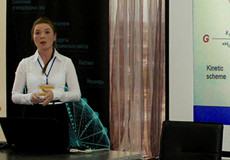 Живой интерес аудитории и наибольшее число вопросов вызвали устные доклады молодых участников О.Ю. Лякина и Р.В. Оттенбахера, посвящённые проблемам селективного экологически безопасного каталитического окисления органических соединений, а также доклад О.А. Симаковой о получении из возобновляемого сырья оксиматарезинола, применяющегося в фармацевтической, текстильной и косметической промышленности. Доклад М.В. Быковой (Институт катализа СО РАН, Новосибирск) “Новые катализаторы для получения биотоплива из масел – продуктов пиролиза биомассы” был отмечен специальным дипломом Конференции как лучший устный доклад секции молодых ученых.
Живой интерес аудитории и наибольшее число вопросов вызвали устные доклады молодых участников О.Ю. Лякина и Р.В. Оттенбахера, посвящённые проблемам селективного экологически безопасного каталитического окисления органических соединений, а также доклад О.А. Симаковой о получении из возобновляемого сырья оксиматарезинола, применяющегося в фармацевтической, текстильной и косметической промышленности. Доклад М.В. Быковой (Институт катализа СО РАН, Новосибирск) “Новые катализаторы для получения биотоплива из масел – продуктов пиролиза биомассы” был отмечен специальным дипломом Конференции как лучший устный доклад секции молодых ученых.
Материалы ключевых лекций и устных докладов будут опубликованы в 2013 году в специальном томе журнала “Topics in Catalysis”, материалы устных докладов молодых ученых – в специальном томе журнала “Кинетика и катализ”.
Большой интерес участников вызвала стендовая сессия, на которой активно обсуждались 110 докладов по всем тематикам конференции. По итогам сессии были награждены дипломами Конференции авторы двух лучших стендовых докладов молодых ученых: K. Jaroszewska (Wrocław University of Technology, Poland) за доклад “Гидрокрекинг и гидроизомеризация н-алканов на никелевых катализаторах” и В.С. Черникова (МГУ, Москва) за доклад “Образование активных центров в NiZn/UDD катализаторах селективного гидрирования фенилацетилена по результатам исследования in situ методом EXAFS”.
Круглый стол Российского фонда фундаментальных исследований “Результаты конкурсов ориентированных фундаментальных исследований, поддержанных РФФИ в 2011 году, и пути их использования”, проведенный на русском языке, составил важную часть научной программы и собрал большую аудиторию участников. В его работе приняли участие начальник Управления ориентированных исследований РФФИ д.ф-м.н. С.А. Цыганов и начальник Отдела ориентированных фундаментальных исследований к.т.н. Е.Р. Рудцкая. Е.Р. Рудцкая выступила с содержательным докладом “Концепция конкурсов ориентированных исследований РФФИ”, в котором представила новейшую информацию о целевых индикаторах деятельности Отдела ориентированных фундаментальных исследований (ОФИ), о распределении финансирования между региональными отделениями и различными областями наук, о степени внедрения результатов, полученных в ходе выполнения проектов, о размерах грантов для финансирования исследований. В развернувшейся дискуссии были затронуты проблемы, связанные с формулировкой направлений, по которым объявляются конкурсы ОФИ. При подведении итогов работы Круглого стола было принято решение предложить Российскому фонду фундаментальных исследований объявить в 2013 году конкурс ориентированных фундаментальных исследований по теме “Механизмы каталитических реакций”, связанной непосредственно с интересами каталитического сообщества и одобренной аудиторией Круглого стола.
Санкт-Петербург – один из самых красивых и удивительных городов мира. Он имеет богатейшую историю и по праву гордится званием культурной столицы России. В напряженной научной программе конференции нашлось время и для знакомства с ценнейшими коллекциями Государственного Эрмитажа и великолепным Исаакиевским собором. По окончании конференции многие участники и гости посетили всемирно известные дворцово-парковые ансамбли и музеи Петергофа и Ораниенбаума, а также родину русского православия – Великий Новгород. Архитектура старинных дворцов и соборов, знаменитые музеи, театры, монументальность разведенных мостов и очарование малых мостов, историческая атмосфера улиц – все это оставило незабываемые воспоминания и желание еще не раз вернуться в город на Неве.
По сравнению с предыдущими конференциями “Механизмы каталитических реакций”, на IX Конференции увеличилось число зарубежных участников, в том числе и российских ученых, постоянно работающих за рубежом. В то же время, несколько снизилось участие представителей стран СНГ (Украины, Беларуси и др.), что, впрочем, было типично и для последнего Международного конгресса по катализу (Мюнхен, Германия, 2012). Существенно большее внимание было уделено гомогенным каталитическим процессам. В научную программу была введена принципиально новая секция “Каталитическая переработка возобновляемых источников энергии”, выбор которой был обусловлен большой популярностью и актуальностью данной тематики. Прошедшая конференция наглядно отражает основные мировые тенденции развития исследований по катализу: сократилось количество работ, связанных с проблемами защиты окружающей среды (восстановление оксидов азота, окисление СО и углеводородов, каталитическое сжигание), водородной энергетики (каталитические процессы получения чистого водорода), за счет роста числа работ, связанных с переработкой возобновляемых ресурсов (природные соединения, биотоплива) и биокатализом. В экспериментальных методах исследования механизма каталитических реакций очевидный акцент сделан на применение методов in situ в сочетании с квантово-химическими методами анализа возможных интермедиатов, маршрутов их трансформации и структуры активных центров.
На церемонии закрытия Конференции был отмечен хороший уровень представленных работ и четкая организация пленарной, ключевой и двух параллельных устных секций, а также активные дискуссии во время стендовой сессии. Конференция позволила российским и зарубежным участниками обменяться информацией о новейших научных достижениях, способствовала выявлению и систематизации актуальных проблем и перспективных направлений развития фундаментальных и поисковых исследований в области механизмов каталитических реакций. Следующую, Х Международную конференцию “Механизмы каталитических реакций” планируется провести в Кракове (Польша) в 2015 году.
Е.А. Козлова, А.Н. Старцев, К.П. Брыляков,
В.А. Садыков, Л.Я. Старцева
Институт катализа им. Г.К. Борескова СО РАН, г. Новосибирск
 |
II Всероссийская научная
|

II Всероссийская научная школа-конференция молодых ученых “Катализ: от науки к промышленности” прошла c 28 октября по 2 ноября 2012 г. в Томске на базе Национального исследовательского Томского государственного университета. Организаторами школы-конференции выступили Национальный исследовательский Томский государственный университет, г. Томск; Институт катализа им. Г.К. Борескова СО РАН, г. Новосибирск; Федеральный научно-производственный центр “Алтай”, г. Бийск; Институт проблем химико-энергетических технологий СО РАН, г. Бийск; Фонд содействия развитию малых форм предприятий в научно-технической сфере; Ассоциация инновационных регионов России; Администрация Томской области; Администрация города Томска; Малое инновационное предприятие ООО “Новохим”, г. Томск. Школа-конференция проходила при финансовой поддержке Российского фонда фундаментальных исследований и ООО “Тирит”, а также при финансовой поддержке и участии компаний “Донау Лаб Москва”, Technoinfo Ltd и ООО “Ростбиохим”.
Школа-конференция молодых ученых была посвящена современным тенденциям в области фундаментального и прикладного катализа. Основные тематические направления школы-конференции были представлены четырьмя секциями: Основы создания и производства каталитических систем, Физико-химические основы каталитических процессов, Перспективные каталитические процессы, Промышленная реализация каталитических процессов.
Целью конференции было организовать площадку, с помощью которой молодые ученые могут ознакомиться с результатами исследований ведущих российских специалистов, продемонстрировать и обсудить свои достижения и идеи, определить перспективные направления научных исследований и возможность внедрения инноваций, установить творческие и рабочие связи, обсудить пути создания условий для взаимовыгодного сотрудничества.
Было принято 129 тезисов докладов, которые были опубликованы в сборнике трудов конференции. Дополнительно были приняты 16 тезисов проектов участников отборочного тура программы “У.М.Н.И.К.” Фонда содействия развитию малых форм предприятий в научно-технической сфере, проводимого в рамках школы-конференции.
В работе школы-конференции приняли очное участие 290 человек из 24 организаций и 15 городов России, а также Украины, Италии, Франции, Казахстана, Азербайджана и Англии. 100 человек выступили с докладами, 174 человека присутствовали в качестве слушателей и 29 человек участвовали заочно. Значительную долю участников – 54 человека – составили ученые из Новосибирска, представленного Институтом катализа. В школе-конференции приняли участие представители как фундаментальной науки (Институт катализа им. Г.К. Борескова СО РАН, Институт проблем переработки углеводородов СО РАН, Институт неорганической химии им. А.В. Николаева СО РАН, Институт общей физики им. А.М. Прохорова РАН, Институт органической химии им. Н.Д. Зелинского РАН, Институт химии нефти СО РАН, Институт экологии Волжского бассейна РАН, Институт химической физики им. Н.Н. Семенова РАН, Институт нефтехимии и катализа РАН, IRCELYON и др.), так и промышленных производств (ОАО Ангарский завод катализаторов и органического синтеза, ООО Салаватский катализаторный завод, ОАО “Синтез-Каучук”, ООО “НИОСТ” (СИБУР) и др.).
Основные мероприятия проходили в конференц-зале Научной библиотеки ТГУ. Было представлено 11 пленарных (40 мин) и 7 ключевых (20 мин) лекций ведущих специалистов, отражающих современные тенденции в области фундаментального и прикладного катализа, 45 устных (10 мин) докладов молодых ученых, 4 презентационных доклада производителей и поставщиков аналитического и исследовательского оборудования, а также стендовые доклады молодых ученых.
Помимо пленарных и секционных заседаний, в рамках школы-конференции прошли практические занятия по катализу, хроматографии и адсорбционным процессам на базе Лаборатории каталитических исследований ТГУ, а также отборочный тур и заседание финального смотра программы “У.М.Н.И.К.” Фонда содействия развитию малых форм предприятий в научно-технической сфере по направлению “Современные материалы и технологии их создания”, а также два круглых стола по актуальным темам “Проблемы химических производств: диалог с исследователями” и “Финансирование научно-исследовательских работ молодых ученых”.
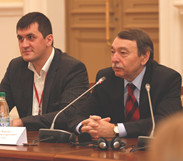 В представленных на конференции пленарных и ключевых лекциях было освещено современное состояние фундаментальных и прикладных исследований и достижений в области катализа. В первый рабочий день основное внимание было обращено на современные физические методы исследования катализаторов и поверхностных реакций.
В представленных на конференции пленарных и ключевых лекциях было освещено современное состояние фундаментальных и прикладных исследований и достижений в области катализа. В первый рабочий день основное внимание было обращено на современные физические методы исследования катализаторов и поверхностных реакций.
 Так, после открытия школы-конференции председателем Научного комитета, ректором Томского государственного университета Г.В. Майером и заместителем губернатора Томской области по инновационной политике, председателем оргкомитета А.С. Князевым с пленарной лекцией на тему “Approaching realistic conditions studies of surfaces and catalysts” выступил доктор Ф. Айрес, руководитель группы Исследований поверхности и межфазных границ Института исследований в области катализа и окружающей среды (Лион, Франция).
Так, после открытия школы-конференции председателем Научного комитета, ректором Томского государственного университета Г.В. Майером и заместителем губернатора Томской области по инновационной политике, председателем оргкомитета А.С. Князевым с пленарной лекцией на тему “Approaching realistic conditions studies of surfaces and catalysts” выступил доктор Ф. Айрес, руководитель группы Исследований поверхности и межфазных границ Института исследований в области катализа и окружающей среды (Лион, Франция).
В лекции были представлены результаты исследований изменения поверхности монокристаллов PdAu и PtSn в реакции окисления CO с применением методов СТМ и РФЭС в условиях, близких к реальным, а также результаты исследования роста углеродных нанотрубок на кобальтовых катализаторах методом Environmental ПЭМ, позволяющим делать съемку в газовой среде и наблюдать реакцию роста углеродных трубок на атомарном уровне. В лекции были отражены современные возможности использования рассматриваемых методов для изучения катализаторов в условиях, приближенных к реальным условиям проведения реакции, отмечены преимущества и недостатки их применения для таких исследований. Работы, подобные обсуждаемым в лекции доктора Айреса, все чаще появляются в открытой печати и обсуждаются на конференциях, отражая тенденцию к изучению гетерогенных катализаторов и протекающих на них каталитических реакций на атомарном уровне в условиях, приближенных к реальным.
 Использование метода СТМ для исследования химических поверхностных процессов гетерогенного катализа на атомном уровне было также рассмотрено д.ф.-м.н. К.Н. Ельцовым, зав. отделом технологии и измерения атомного масштаба Института общей физики им. А.М. Прохорова РАН (Москва), в пленарной лекции “Модельные исследования поверхностных химических реакций с использованием СТМ”. В лекции еще раз отмечено, что возможность наблюдения и анализа методом СТМ локальных структур на атомном уровне в процессе поверхностной реакции позволяет делать выводы о механизмах взаимодействия. В качестве примера были показаны и обсуждены наблюдаемые методом СТМ процессы формирования различных атомных структур на поверхности Ag(111) и Au(111) при воздействии молекулярного хлора, являющегося модификатором серебряных и золотых катализаторов в реакциях эпоксидирования этилена и стирола, в широком диапазоне степеней покрытия при температуре подложки 300 К. В данной работе была отражена еще одна тенденция в современной научно-исследовательской работе – совмещение теоретических (математическое моделирование и т.д.) и практических (непосредственное наблюдение в опыте) подходов для описания механизма реакции.
Использование метода СТМ для исследования химических поверхностных процессов гетерогенного катализа на атомном уровне было также рассмотрено д.ф.-м.н. К.Н. Ельцовым, зав. отделом технологии и измерения атомного масштаба Института общей физики им. А.М. Прохорова РАН (Москва), в пленарной лекции “Модельные исследования поверхностных химических реакций с использованием СТМ”. В лекции еще раз отмечено, что возможность наблюдения и анализа методом СТМ локальных структур на атомном уровне в процессе поверхностной реакции позволяет делать выводы о механизмах взаимодействия. В качестве примера были показаны и обсуждены наблюдаемые методом СТМ процессы формирования различных атомных структур на поверхности Ag(111) и Au(111) при воздействии молекулярного хлора, являющегося модификатором серебряных и золотых катализаторов в реакциях эпоксидирования этилена и стирола, в широком диапазоне степеней покрытия при температуре подложки 300 К. В данной работе была отражена еще одна тенденция в современной научно-исследовательской работе – совмещение теоретических (математическое моделирование и т.д.) и практических (непосредственное наблюдение в опыте) подходов для описания механизма реакции.
 В лекции д.х.н., профессора Э.М. Мороз (Институт катализа СО РАН, Новосибирск) “Определение структуры наноматериалов рентгенографическим методом радиального распределения электронной плотности” проанализированы роль рентгенографических методов в исследовании материалов, особенности дифракционных картин для нанокристаллических систем, к которым относятся катализаторы, основные принципы современных структурных методов для исследования наноматериалов, а также подробно рассмотрен рентгенографический метод радиального распределения электронной плотности. Отмечены основные достоинства и недостатки (в сравнении с методом EXAFS) данного метода. Возможности рассматриваемых методов были проиллюстрированы в лекции на примерах исследования катализаторов и носителей различного состава. В лекции подчеркивалось, что наноразмерные объекты, к которым относятся каталитические системы, проявляют свойства, отличные от массивных объектов, и требуют специальных подходов для их исследования, учитывающих размерный эффект.
В лекции д.х.н., профессора Э.М. Мороз (Институт катализа СО РАН, Новосибирск) “Определение структуры наноматериалов рентгенографическим методом радиального распределения электронной плотности” проанализированы роль рентгенографических методов в исследовании материалов, особенности дифракционных картин для нанокристаллических систем, к которым относятся катализаторы, основные принципы современных структурных методов для исследования наноматериалов, а также подробно рассмотрен рентгенографический метод радиального распределения электронной плотности. Отмечены основные достоинства и недостатки (в сравнении с методом EXAFS) данного метода. Возможности рассматриваемых методов были проиллюстрированы в лекции на примерах исследования катализаторов и носителей различного состава. В лекции подчеркивалось, что наноразмерные объекты, к которым относятся каталитические системы, проявляют свойства, отличные от массивных объектов, и требуют специальных подходов для их исследования, учитывающих размерный эффект.
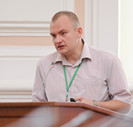 Еще одному современному методу была посвящена ключевая лекция “Возможности малоуглового рентгеновского рассеяния для исследования нанесенных катализаторов и функциональных материалов”, сделанная к.х.н. Ю.В. Ларичевым (Институт катализа СО РАН, Новосибирск) в соавторстве с д.б.н. Ф.В. Тузиковым. В лекции рассмотрены достоинства метода МУРР, трудности, возникающие при исследовании им катализа-торов, а также подходы, позволяющие использовать данный метод для исследования катализаторов; основное внимание было уделено применению контрастов. В качестве иллюстрации в лекции представлены результаты исследования методом МУРР различных нанесенных катализаторов и функциональных материалов и проведено сравнение полученных материалов с данными электронной микроскопии и рентгеновской дифракции.
Еще одному современному методу была посвящена ключевая лекция “Возможности малоуглового рентгеновского рассеяния для исследования нанесенных катализаторов и функциональных материалов”, сделанная к.х.н. Ю.В. Ларичевым (Институт катализа СО РАН, Новосибирск) в соавторстве с д.б.н. Ф.В. Тузиковым. В лекции рассмотрены достоинства метода МУРР, трудности, возникающие при исследовании им катализа-торов, а также подходы, позволяющие использовать данный метод для исследования катализаторов; основное внимание было уделено применению контрастов. В качестве иллюстрации в лекции представлены результаты исследования методом МУРР различных нанесенных катализаторов и функциональных материалов и проведено сравнение полученных материалов с данными электронной микроскопии и рентгеновской дифракции.
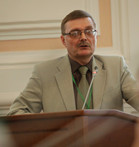 В ключевой лекции к.х.н. А.Н. Саланова (Институт катализа СО РАН, Новосибирск) были отражены современные возможности метода РЭМ, который благодаря значительному прогрессу в развитии электронной микроскопии позволяет не только получать изображение поверхности микро- и нанообъектов в интервале увеличений 10-1000000 крат с разрешением менее 1 нм, но и проводить анализ и характеризацию материалов. В лекции рассмотрена возможность использования рентгеновского микроанализа и дифракции обратноотраженных электронов при РЭМ исследованиях, а также метод картирования для исследования сложных по составу и микроструктуре материалов. В качестве примера рассмотрено использование картирования для исследования автомобильных каталитических нейтрализаторов и катализаторов на основе керметов.
В ключевой лекции к.х.н. А.Н. Саланова (Институт катализа СО РАН, Новосибирск) были отражены современные возможности метода РЭМ, который благодаря значительному прогрессу в развитии электронной микроскопии позволяет не только получать изображение поверхности микро- и нанообъектов в интервале увеличений 10-1000000 крат с разрешением менее 1 нм, но и проводить анализ и характеризацию материалов. В лекции рассмотрена возможность использования рентгеновского микроанализа и дифракции обратноотраженных электронов при РЭМ исследованиях, а также метод картирования для исследования сложных по составу и микроструктуре материалов. В качестве примера рассмотрено использование картирования для исследования автомобильных каталитических нейтрализаторов и катализаторов на основе керметов.
В первый рабочий день вниманию участников также были представлены пленарная лекция М.И. Целютиной, начальника отдела НИР ИК центра исследований и контроля ОАО АЗКиОС (Ангарск), на тему “Опыт промышленного внедрения НИР на Ангарском заводе катализаторов и органического синтеза” и доклад Д.А. Медведева, коммерческого директора ООО “Салаватский катализаторный завод”, на тему “Развитие наукоемких отраслей производства”. В лекции и докладе были отражены современное состояние, основные достижения и проблемы отечественных катализаторных фабрик.
Во второй рабочий день школы-конференции тематика пленарных и ключевых лекций касалась исследований каталитических свойств катализаторов и механизмов каталитических реакций. В пленарной лекции к.х.н. Г.А. Бухтияровой, с.н.с. Института катализа СО РАН (Новосибирск), на тему “Экспериментальные методы определения каталитических свойств: практические аспекты” были рассмотрены методологические аспекты исследования каталитической активности катализаторов, отмечены преимущества и недостатки существующих методов, их применимость для решения тех или иных задач. Данная лекция была направлена на формирование у молодых ученых понимания, как организовать проведение тестирования катализаторов на высоком методологическом уровне, позволяющем получать корректные данные по активности катализаторов, необходимые на всех стадиях изучения катализаторов, начиная от лабораторных исследований и заканчивая промышленным внедрением.
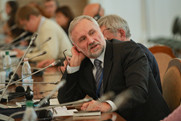 В пленарной лекции д.х.н., профессора А.И. Боронина (Институт катализа СО РАН, Новосибирск) “Теоретические и практические аспекты эффективного окисления CO” рассмотрена концепция действия различных механизмов окислительного катализа (Лэнгмюра-Хиншельвуда, Марса-ван Кревелена, ассоциативный) и их особенности в отношении оксида углерода, которые определяются природой связи молекулы СО и кислорода. Особый акцент был сделан на рассмотрение механизма действия окисления СО при низких температурах, требующего преодоления эффекта ингибирования, связанного с образованием плотного адсорбционного слоя молекул оксида углерода, обладающих высоким значением энтальпии адсорбции. На примере металлических, сплавных и нанесенных на инертные носители катализаторов были рассмотрены возможности координационного и размерного эффекта в проявлении низкотемпературной активности. В работе также обсуждались различные перспективные каталитические системы, особенности их строения и возможные механизмы окисления СО.
В пленарной лекции д.х.н., профессора А.И. Боронина (Институт катализа СО РАН, Новосибирск) “Теоретические и практические аспекты эффективного окисления CO” рассмотрена концепция действия различных механизмов окислительного катализа (Лэнгмюра-Хиншельвуда, Марса-ван Кревелена, ассоциативный) и их особенности в отношении оксида углерода, которые определяются природой связи молекулы СО и кислорода. Особый акцент был сделан на рассмотрение механизма действия окисления СО при низких температурах, требующего преодоления эффекта ингибирования, связанного с образованием плотного адсорбционного слоя молекул оксида углерода, обладающих высоким значением энтальпии адсорбции. На примере металлических, сплавных и нанесенных на инертные носители катализаторов были рассмотрены возможности координационного и размерного эффекта в проявлении низкотемпературной активности. В работе также обсуждались различные перспективные каталитические системы, особенности их строения и возможные механизмы окисления СО.
Ключевая лекция к.х.н. В.И. Елохина (Институт катализа СО РАН, Новосибирск) “Стохастические модели процессов адсорбции, диффузии и реакции на нанесённых металлических наночастицах с изменяющимися под воздействием реакционной среды формой и морфологией поверхности частиц” была посвящена теоретическому исследованию кинетики каталитических реакций на наночастицах металла методом Монте-Карло. В лекции обсуждались специфика каталитических реакций на наночастицах металла, возможные подходы к моделированию, а также результаты теоретических исследований каталитических процессов на нанесенной наночастице с динамически изменяющейся формой и морфологией поверхности. Подтвержденные многочисленными экспериментальными данными результаты моделирования, представленные в лекции, хорошо продемонстрировали тенденцию к использованию совокупности экспериментальных и теоретических методов для установления механизмов каталитических реакций.
Ключевая лекция к.х.н. В.И. Соболева, зав. лабораторией гетерогенного селективного окисления ( Институт катализа СО РАН, Новосибирск), на тему “Изотопный обмен – метод исследования реакционной способности и подвижности поверхностного кислорода” была посвящена изотопному обмену кислорода как методу, с помощью которого удается изучать каталитическую активность оксидных и нанесенных катализаторов, механизм и кинетические особенности реакции, которые связаны с состоянием кислорода на поверхности. В докладе на примере цеолитов Fe-ZSM-5, активных в реакции разложения N2O, и Au/TiO2, являющейся одной из наиболее изучаемых каталитических систем в гетерогенном катализе, было представлено, как с помощью этой простейшей реакции можно изучать высокореакционные формы поверхностного кислорода и их роль в реакциях селективного и полного окисления. Кроме того, на примере перовскитов со смешанной кислород-электронной проводимостью была показана возможность использования этой реакции для изучения транспорта кислорода через кислородпроницаемые мембраны.
В третий рабочий день школы-конференции были представлены лекции, тематика которых касалась как строения активных центров и дизайна каталитических систем, так и перспективных каталитических процессов. В частности, лекция д.ф.-м.н., профессора Г.М. Жидомирова “Структурные модели активных центров цеолитных катализаторов” была посвящена рассмотрению различных каталитически активных центров цеолитов: льюисовских и бренстедовских кислотных центров, а также катионов металлов, стабилизированных в тех или иных структурных позициях цеолитной решетки. Для иллюстрации были приведены корреляции свойств цеолитных катализаторов с их активностью в реакциях дегидрирования этана и реакции окисления молекул СО.
В пленарной лекции к.х.н. А.В. Лавренова, зам. директора Института проблем переработки углеводородов СО РАН (Омск), на тему “Процессы получения экологически чистых моторных топлив с применением катализаторов на основе модифицированных оксидов алюминия и циркония” было рассмотрено применение систем на основе модифицированных оксидов алюминия и циркония в качестве кислотных и полифункциональных катализаторов для традиционных и современных процессов получения экологически чистых моторных топлив.
В ключевой лекции д.х.н., профессора В.А. Садыкова, зав. лабораторией катализаторов глубокого окисления Института катализа СО РАН (Новосибирск), “Катализ катодных и анодных реакций в твердооксидных топливных элементах (ТОТЭ)” обсуждались результаты исследований по созданию эффективных катодных и анодных нанокомпозитных каталитических материалов для среднетемпературных ТОТЭ на базе детального изучения природы их каталитического действия в реакциях активации молекулярного кислорода и трансформации природного газа и биотоплив в синтез-газ и водород. В лекции отражена наблюдаемая в целом в области приготовления катализаторов тенденция перехода от метода проб и ошибок к получению катализаторов с заданными свойствами при научно обоснованном выборе способа и контроле условий синтеза.
Ключевая лекция д.х.н. В.А. Розенцвета, в.н.с. Института экологии Волжского бассейна РАН (Тольятти), на тему “Синтез разветвленных полимеров методом катионной полимеризации сопряженных диенов” была посвящена катионной полимеризации сопряженных диенов (1,3-диенов) как эффективному способу получения полимеров с различной ненасыщенностью и молекулярными характеристиками. В докладе представлены общие законо-мерности полимеризации 1,3-пентадиена и изопрена под действием каталитических систем на основе различных кислот Льюиса (ZnCl2, ZnBr2, BF3O(C2H5)2 и TiCl4, AlCl3, VOCl3). В лекции отмечалось, что полученные в работе результаты использованы в разработке технологического регламента по производству синтетического каучука марки СКОП, процесс получения которого основан на катионной полимеризации 1,3-пентадиена под действием каталитических систем на основе тетрахлорида титана. Данный процесс был внедрен в производство на Стерлитамакском нефтехимическом заводе и Тольяттинском ПО “Синтезкаучук”.
В четвертый рабочий день школы-конференции вниманию участников были представлены лекции по перспективным каталитическим процессам, а также по расчетам химических реакторов и моделированию процессов. Д.х.н. А.С. Белый, зав. лабораторией Института проблем переработки углеводородов СО РАН (Омск), представил лекцию на тему “Современные технологии производства моторных топлив: разработки, технологии, внедрения”, в которой были рассмотрены проблемы, связанные с существующими в настоящее время тенденциями необходимости увеличения эффективности современных процессов переработки бензиновых фракций при одновременном ужесточении требований к их экологической безопасности. В лекции был проанализирован опыт решения проблем в процессе освоения промышленного производства новых катализаторов, приводились данные по промышленному опыту эксплуатации новых катализаторов, обсуждалась перспективность применения интегрированных процессов переработки бензиновых фракций с комбинацией ранее известных процессов (риформинг, изомеризация) и новых процессов (биформинг, экоформинг) с включением в технологические схемы стадий изомеризации бензола в метилциклопентаны и селектокрекинга н-алканов.
В пленарной лекции профессора Флорентийского университе-та У. Барди (Сесто-Фьорентино, Италия) “Petroleum: past, present and future: Catalysis in the 21st century” был сделан интересный обзор по процессам переработки нефти и газа, катализаторам этих процессов, обсуждалось современное состояние в области нефте- и газопереработки и перспективы развития этой области.
В пленарной лекции к.х.н., профессора А.Н. Шмелева, в.н.с. ООО НЦИР “РИЗИКОН” (Северодонецк, Украина), на тему “Что и как считают проектировщики каталитических процессов” обсуждались подходы для проектирования каталитических реакторов, используемые в современных компьютерных системах программ.
В ключевой лекции “Математическое моделирование процесса регенерации закоксованных катализаторов: общие закономерности, влияние технологических параметров” д.х.н. С.И. Решетникова, с.н.с. Института катализа СО РАН (Новосибирск), обсуждались проблемы дезактивации катализаторов и методы моделирования процессов регенерации зауглероженных катализаторов, позволяющего проводить процесс восстановления свойств катализатора в максимально короткие сроки, но при этом не допустить его перегрева, а также оптимизировать цикл “реакция-регенерация”.
Представленные участниками в ходе секционных заседаний и на стендовой секции доклады соответствовали тематическим направлениям школы-конференции. Были представлены работы по приготовлению носителей и катализаторов, в том числе работы, направленные на понимание процессов, происходящих при синтезе катализаторов; работы, посвященные исследованию характеристик катализаторов различными физико-химическими методами, их взаимосвязи с каталитической активностью в различных процессах нефтепереработки и нефтехимии, тонком органическом синтезе; работы по экологическому катализу, электрокатализу и топливным элементам, работы по исследованию кинетики и механизмов различных реакций, математическому моделированию химических процессов. Председатели всех секций и члены организационного комитета отметили достаточно высокий уровень представленных работ и активность молодых ученых при обсуждении докладов. Большинство представленных работ являются актуальными, обладают научной новизной результатов и могут лечь в основу или стать частью патентов, статей, диссертаций на соискание ученых степеней. Большая часть устных докладов молодых ученых была рекомендована к опубликованию в специальном выпуске журнала “Кинетика и катализ”.
На проводимом в рамках школы-конференции отборочном туре программы “У.М.Н.И.К.” Фонда содействия развитию малых форм предприятий в научно-технической сфере были заслушаны проекты молодых ученых. Комиссия отметила высокий уровень и практическую значимость ряда представленных проектов, рекомендовав 8 проектов для представления на итоговом смотре-конкурсе. Из восьми рекомендованных проектов четыре работы прошли отбор на финальный смотр программы. Их авторы стали победителями программы “У.М.Н.И.К.” по направлению “Современные материалы и технологии их создания” и получили прекрасную возможность для внедрения своих инновационных идей и создания реального продукта на их основе.
На круглом столе “Проблемы химических производств: диалог с исследователями” рассматривались вопросы, касающиеся воз-можности эффективного взаимодействия промышленных произ-водств и научно-исследовательских коллективов, обсуждались проблемы и пути решения для их эффективной работы.
На круглом столе “Финансирование научно-исследовательских работ молодых ученых” обсуждались вопросы финансовой поддержки работ молодых ученых, рассматривались различные формы финансовой поддержки, проблемы, возникающие при получе-нии первого гранта и т.п.
Характерной чертой II Всероссийской школы-конференции молодых ученых “Катализ: от науки к промышленности” являлось обсуждение наиболее актуальных и важных направлений и тематик научных исследований в области катализа, отражающих тенденции развития катализа в России и мире. Кроме того, в ходе конференции обсуждались важные для развития научного и промышленного потенциала России вопросы, касающиеся внедрения в промышленность и финансирования научно-исследовательских и опытно-конструкторских работ. В рамках программы “У.М.Н.И.К.” молодым ученым была предоставлена реальная возможность получить финансовую поддержку для выполнения и последующего внедрения своих работ.
Авторы лучших докладов были награждены дипломами: диплом первой степени за лучший устный доклад получили О.А. Стонкус, аспирант, м.н.с. Института катализа СО РАН (“Состояние палладия в катализаторах Pd/CeO2 и Pd/Al2O3 окисления CO в режиме автоколебаний”) и Д.О. Мартынова, аспирант, м.н.с. Томского государственного университета (“Синтез и каталитическая активность мезопористого Ag/SiO2 в низкотемпературном окислении СО”); диплом второй степени – Ю.А. Зайцева, аспирант, м.н.с. Института катализа СО РАН (“Каталитическое превращение карбоновых кислот в кетоны”) и И.Н. Воропаев, к.х.н., н.с. Института катализа СО РАН (“Разработка палладиевых катализаторов нового поколения на мезопористых углеродных носителях для процессов гидрирования растительных масел”); диплом третей степени – Д.А. Свинцицкий, аспирант, м.н.с. Института катализа СО РАН (“Окисление СО на поверхности наночастиц оксида меди”) и О.А. Кунгурова, магистрант Томского государственного университета (“Кобальтсодержащие катализаторы процесса Фишера-Тропша на основе модифицированной гамма окиси алюминия”). Полные тексты отдельных устных докладов были рекомендованы к публикации в журнале “Кинетика и катализ”.
III Всероссийскую научную школу-конференцию молодых ученых “Катализ: от науки к промышленности” планируется провести в 2014 или 2015 году.
к.х.н. А.И. Стадниченко
Институт катализа им. Г.К. Борескова СО РАН, Новосибирск/P>
Photocatalysts: Nanosized crystal patchwork
generates hydrogen, raising alternative-energy hopes
By Mitch Jacoby
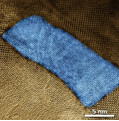 If water could be separated economically into oxygen and hydrogen, a clean-burning fuel, the world’s oceans would represent a free and virtually limitless feedstock for producing energy. A new strategy for designing light-activated catalysts that split water may help bring that alternative-energy goal a step closer to reality.
If water could be separated economically into oxygen and hydrogen, a clean-burning fuel, the world’s oceans would represent a free and virtually limitless feedstock for producing energy. A new strategy for designing light-activated catalysts that split water may help bring that alternative-energy goal a step closer to reality.
The interfaces between nanosized domains of α- and β-Ga2O3 mediate photocatalytic charge separation and water splitting.
Researchers in China have found that crystals of the semiconductor Ga2O3 that are composed of a patchwork of structurally distinct nanosized domains can split water photocatalytically (Angew. Chem. Int. Ed., DOI: 10.1002/anie.201207554). The study demonstrates that the interface between polymorphic crystal phases can play a key role in light-stimulated water splitting. The work may lead to photocatalysts that are more active than the relatively inefficient ones available today.
Photocatalysts split water by directing energy absorbed from light—often sunlight—to break water’s chemical bonds. The heart of the process is the light absorption event, which generates pairs of negatively charged electrons and positively charged holes (electron vacancies). The key to capitalizing on the energy absorbed from light is keeping the charges separated. Charge recombination can dissipate the absorbed energy before bonds are broken.
The standard strategy for maximizing charge separation in semiconductors calls for selectively doping the material to juxtapose positively (p-type) and negatively (n-type) charged regions. Researchers also make these types of interfaces, known as p-n junctions, by depositing two types of semiconductors side by side.
The new study, which was conducted by Xiang Wang, Can Li, and coworkers of the Dalian Institute of Chemical Physics, demonstrates an alternative way to keep charges separated. Rather than relying on p-n junctions to do the job, the Dalian team exploits the interfaces between structurally dissimilar nanosized domains of Ga2O3, which is known to crystallize in five polymorphic phases.
The researchers show that a simple heat treatment can be used to tailor the distribution of nanosized domains of Ga2O3’s so-called α and β phases. They further show that mixed α-β samples prepared by heating the starting material to roughly 600°C are up to seven times more catalytically active in splitting water than samples composed of either phase alone.
The University of Tokyo’s Kazunari Domen comments that although in this proof-of-concept study the overall activity of the Ga2O3 photocatalysts is not especially high, the strategy described here represents a new approach to boosting catalytic water-splitting efficiency. He adds that the method’s applicability may be limited, however, as a result of the relatively small number of materials known to exhibit similar kinds of polymorphs.
Iridium-catalyzed reaction creates
valuable scaffolds enantioselectively
By Bethany Halford

A new protocol for preparing polycyclic compounds enantioselectively promises to make it easier to build these pharmaceutically relevant scaffolds (J. Am. Chem. Soc., DOI: 10.1021/ja310386m). The reaction, developed by Erick M. Carreira and coworkers at the Swiss Federal Institute of Technology, Zurich, uses an iridium-based catalyst and a zinc triflate promoter to coax the cascade reaction of polyenes (example shown). To begin the cascade, a racemic allylic alcohol within the polyene structure reacts with an iridium catalyst. This interaction appears to dictate the stereochemistry of the first cyclization. Subsequent cyclizations are effectively encoded in the first ring, the researchers believe. Using the protocol, Carreira and colleagues prepared nine polycyclic compounds—including heterocycles—in good yields, with enantiomeric excesses reaching 99%. “It is important to note that all the reactions are conducted at ambient temperature with commercial-grade solvents and reagents, making this cyclization protocol convenient to perform,” the chemists point out.
Tomography method monitors changes
in chemically distinct nanoscale regions of catalysts under reaction conditions
By Mitch Jacoby
Thanks to a specially designed reactor cell, researchers can now probe changes in the chemical composition, morphology, porosity, and other properties of individual 20-μm-sized catalyst particles as the particles mediate chemical reactions (Angew. Chem. Int. Ed., DOI: 10.1002/anie.201204930).
The study conducted by Joy C. Andrews of SLAC National Accelerator Laboratory; Bert M. Weckhuysen of Utrecht University, in the Netherlands; and coworkers demonstrates a procedure for exploiting high-energy X-ray microscopy to penetrate deeply into complex materials and resolve chemically distinct nanoscale regions within their bulk. Solid catalysts often undergo substantial changes—sometimes beneficial, sometimes detrimental—upon exposure to reactive chemicals at high temperature and pressure. Mapping those changes in three dimensions as they occur could lead to improved catalysts, but capturing the information remains challenging. To demonstrate the new method’s capabilities, the team probed a model Fischer-Tropsch C–C coupling catalyst as it was exposed to 10 atm of a mixture of H2 and CO at 350°C. The method pinpointed regions rich in Fe2O3, Fe2TiO5, Fe3O4, ZnO, and K2O and monitored the evolution of those regions over the course of several hours.
Chemical & Engineering News
Applied Catalysis A: General
Nanocatalysts for conversion of natural gas to liquid fuels and petrochemical feedstocks. Review article
M. Gharibi, F.T. Zangeneh, F. Yaripour, S. Sahebdelfar
http://www.sciencedirect.com/science/article/pii/S0926860X12004036
Fischer-Tropsch synthesis: Effect of Pd, Pt, Re, and Ru noble metal promoters on the activity and selectivity
of a 25%Co/Al2O3 catalyst
W. Ma, G. Jacobs, R.A. Keogh, D.B. Bukur, B.H. Davis
http://www.sciencedirect.com/science/article/pii/S0926860X12003183
Applied Catalysis B: Environmental
Mn-Fe/ZSM5 as a low-temperature SCR catalyst to remove NOx from diesel engine exhaust
Y.J. Kim, H.J. Kwon, I. Heo, I.S. Nam, B.K. Cho, J.W. Choung, M.S. Cha, G.K. Yeo
http://www.sciencedirect.com/science/article/pii/S0926337312002639
Improved visible light photocatalytic activity of TiO2 co-doped with vanadium and nitrogen
Jaiswal, R.; Patel, N.; Kothari, D.C.; Miotello, A.
http://www.sciencedirect.com/science/article/pii/S0926337312002974
Catalysis Today
The past, present and future of heterogeneous catalysis
I. Fechete, Y. Wang, J.C. Vedrine
http://www.sciencedirect.com/science/article/pii/S0920586112002751
Main technologies in biodiesel production: State of the art and future challenges. Review article
E. Santacesaria, G.M. Vicente, M. Di Serio, R. Tesser
http://www.sciencedirect.com/science/article/pii/S0920586112003446
Chemical Engineering Journal
Modified oil palm leaves adsorbent with enhanced hydrophobicity for crude oil removal
S.M. Sidik, A.A. Jalil, S. Triwahyono, S.H. Adam, M.A.H. Satar, B.H. Hameed
http://www.sciencedirect.com/science/article/pii/S1385894712008625
Journal of Catalysis
CO hydrogenation to methanol on Cu-Ni catalysts: Theory and experiment
F. Studt, F. Abild-Pedersen, Q. Wu, A.D. Jensen, B. Temel, J.D. Grunwaldt, J.K. Norskov
http://www.sciencedirect.com/science/article/pii/S0021951712001765
ChemCatChem
Simultaneous Generation of Mesoxalic Acid and Electricity from Glycerol on a Gold Anode Catalyst
in Anion-Exchange Membrane Fuel Cells
Le Xin, Zhiyong Zhang, Zhichao Wang, Wenzhen Li
http://onlinelibrary.wiley.com/doi/10.1002/cctc.201200017/full
ChemSusChem
An Intermolecular Heterobimetallic system for Photocatalytic Water Reduction
Sven Hansen, Marcus Klahn, Torsten Beweries, Uwe Rosenthal
http://onlinelibrary.wiley.com/doi/10.1002/cssc.201100794/full
Advanced Synthesis & Catalysis
Catalytic Asymmetric Epoxidation of 2-Cyclopentenones
Carl A. Busacca, Daniel R. Fandrick, Jinhua J. Song, Chris H. Senanayake
http://onlinelibrary.wiley.com/doi/10.1002/adsc.201200072/full
Angewandte Chemie International Edition
Electronic Modulation of a Copper/Zinc Oxide Catalyst by a Heterojunction for Selective Hydrogenation
of Carbon Dioxide to Methanol
Fenglin Liao, Ziyan Zeng, Clive Eley, Qin Lu, Xinlin Hong, Shik Chi Edman Tsang
http://onlinelibrary.wiley.com/doi/10.1002/anie.201200903/full
Applied Organometallic Chemistry
Mixed metal MgO–ZrO2 nanoparticle-catalyzed O-tert-Boc protection of alcohols and phenols under solvent-free conditions
Manoj B. Gawande, Sharad N. Shelke, Paula S. Branco, Anuj Rathi and Rajesh K. Pandey
http://onlinelibrary.wiley.com/doi/10.1002/aoc.2846/full
Chemical Engineering and Technology
Testing of a Ni-Al2O3 Catalyst for Methane Steam Reforming Using Different Reaction Systems
N. de Miguel, J. Manzanedo, P. L. Arias
http://onlinelibrary.wiley.com/doi/10.1002/ceat.201100348/pdf
Asia-Pacific Journal of Chemical Engineering
Application of clean technologies using electrochemistry in ionic liquids
A.P. Doherty, L. Diaconu, E. Marley, P. L. Spedding, R. Barhdadi, M. Troupel
http://onlinelibrary.wiley.com/doi/10.1002/apj.529/pdf
Chemistry – A European Journal
Bimetallic Catalysis using Transition and Group 11 Metals: An Emerging Tool for C-C Coupling and Other Reactions
M. H. Pérez-Temprano, J. A. Casares, P. Espinet
http://onlinelibrary.wiley.com/doi/10.1002/chem.201102888/full
Journal of Chemical Technology and Biotechnology
Heterogeneously catalyzing C-C coupling reactions with precious metal nanoparticles
Simon K. Beaumont
http://onlinelibrary.wiley.com/doi/10.1002/jctb.3748/full
Helvetica Chimica Acta
Substrate Range of the Titanium TADDOLate Catalyzed Asymmetric Fluorination of Activated Carbonyl Compounds
Andreas Bertogg, Lukas Hintermann, Dominique P. Huber, Mauro Perseghini, Maria Sanna, Antonio Togni
http://onlinelibrary.wiley.com/doi/10.1002/hlca.201100375/pdf
Macromolecular Reaction Engineering
Effect of Hydrogen and External Donor on Propylene Polymerization Kinetics with a 4th-Generation Ziegler-Natta Catalyst
Ahmad Alshaiban, João B. P. Soares
http://onlinelibrary.wiley.com/doi/10.1002/mren.201200002/full
Macromolecular Chemistry and Physics
Poly(ε-caprolactone) by Combined Ring-Opening Polymerization and Polycondensation
Hans R. Kricheldorf, Steffen M. Weidner, Felix Scheliga, Mohammed Lahcini
http://onlinelibrary.wiley.com/doi/10.1002/macp.201200061/full
Israel Journal of Chemistry
Asymmetric Autocatalysis Triggered by Chiral Crystals Formed from Achiral Compounds and Chiral Isotopomers
Tsuneomi Kawasaki, Kenso Soai
http://onlinelibrary.wiley.com/doi/10.1002/ijch.201100155/full
Chinese Journal of Chemistry
Friedel-Crafts Alkylation of Indoles with Nitroalkenes Catalyzed by Zn(II)-Thiourea Complex
Ningning Wan, Yonghai Hui, Zhengfeng Xie, Jide Wang
http://onlinelibrary.wiley.com/doi/10.1002/cjoc.201180480/pdf
Journal of the Chinese Chemical Society
Control of Catalytic Activity Via Porosity, Chemical Composition, and Morphology of Nanostructured Porous
Manganese Oxide Materials
Chun-Hu Chen, Steven L. Suib
http://onlinelibrary.wiley.com/doi/10.1002/jccs.201100699/pdf
WIRES: Computational Molecular Science
A refinement of everyday thinking: the energetic span model for kinetic assessment of catalytic cycles
Sebastian Kozuch
http://onlinelibrary.wiley.com/doi/10.1002/wcms.1100/full
Zeitschrift für anorganische und allgemeine Chemie
Synthesis of a Water-Stable 2, 4-Bis(trifluoromethyl)phenyl-Substituted Phosphonous Acid Palladium Complex
and its Catalytic Activity in Cross-Coupling Reactions
Boris Kurscheid, Hans-Georg Stammler, Beate Neumann, Berthold Hoge
http://onlinelibrary.wiley.com/doi/10.1002/zaac.201100344/full
The Chemical Record
Design of Molecular Catalysts for Achievement of High Turnover Number in Homogeneous Hydrogenation
Noriyoshi Arai, Takeshi Ohkuma
http://onlinelibrary.wiley.com/doi/10.1002/tcr.201100019/full
European Journal of Organic Chemistry
Biocatalytic Approaches to the Henry (Nitroaldol) Reaction
Sinéad E. Milner, Thomas S. Moody, Anita R. Maguire
http://onlinelibrary.wiley.com/doi/10.1002/ejoc.201101840/full
European Journal of Inorganic Chemistry
Cooperative Catalysis with First-Row Late Transition Metals
Jarl Ivar van der Vlugt
http://onlinelibrary.wiley.com/doi/10.1002/ejic.201100752/full
ChemPhysChem
The Role of Effective Mass of Carrier in the Photocatalytic Behavior of Silver Halide-Based Ag@AgX (X=Cl, Br, I):
A Theoretical Study
Xiangchao Ma, Ying Dai, Meng Guo, Baibiao Huang
http://onlinelibrary.wiley.com/doi/10.1002/cphc.201200159/full
Aiche Journal
Multiscale modeling for emergent behavior, complexity, and combinatorial explosion
Dionisios G. Vlachos
http://onlinelibrary.wiley.com/doi/10.1002/aic.13803/full
The Canadian Journal of Chemical Engineering
Evolving applications of zeolite molecular sieves
Christopher C. H. Lin, K. Amy Dambrowitz, Steven M. Kuznicki
http://onlinelibrary.wiley.com/doi/10.1002/cjce.20667/pdf
Journal of Peptide Science
Peptides as asymmetric catalysts and templates for the controlled formation of Ag nanoparticles
Helma Wennemers
http://onlinelibrary.wiley.com/doi/10.1002/psc.2422/full
Chemie Ingenieur Technik
New Catalysts for the Hydrogenation of Glucose to Sorbitol
Reinhard Geyer, Peter Kraak, Axel Pachulski, Rainer Schödel
http://onlinelibrary.wiley.com/doi/10.1002/cite.201100108/pdf
|
2nd International Conference on Mechanical Engineering and Materials Sanya, China |
http://www.icmem2003-conf.org | |
|
5-й Всероссийский семинар "Физико-химия поверхностей и наноразмерных систем" Москва, Россия |
ame@phyche.ac.ru | |
|
7th Workshop on Scanning Electrochemical Microscopy (SECM-7) Ein Gedi (Dead Sea), Israel |
http://chem.ch.huji.ac.il/SECM-2013/index.html | |
|
7th Workshop on Scanning Electrochemical Microscopy (SECM-7) Singapore |
||
|
10th Natural Gas Conversion Symposium (NGCS 10) Doha, Qatar |
www.ngcb.org | |
|
3rd International Conference on Multifunctional, Hybrid and Nanomaterials (Hybrid Materials 2013) Sorrento, Italy |
http://www.hybridmaterialsconference.com/ | |
|
Netherlands’ Catalysis and Chemistry Conference Noordwijkerhout, the Netherlands |
http://www.n3c.nl/ | |
|
International Conference on MEMS and Mechanics (MEMSM 2012) Wuhan, China |
http://www.memsm2013-conf.org | |
|
21st International Conference on Polymer Characterization - World Forum on Advanced Materials (PolyChar-21) Daegu, Korea |
http://www.yesgb.co.kr/ | |
|
VII Всероссийская конференция молодых учёных, аспирантов и студентов по химии и наноматериалам “Менделеев-2013” Санкт-Петербург, Россия |
www.mendeleev-spbu.org | |
|
Symposium on Heterogeneous Catalysis for Fine Chemicals (FineCat 2013) Palermo, Italy |
http://www.qualitas1998.net/ismn/finecat.htm | |
|
9th European Congress of Chemical Engineering – ECCE9 World Forum Hague, the Netherlands |
http://www.ecce2013.eu/ | |
|
3rd International Colloids Conference – Colloids & Energy Xiamen, China |
www.colloidsconference.com | |
|
IV Нефтегазовая конференция “ЭКОБЕЗОПАСНОСТЬ-2013” Москва, Россия |
http://www.intecheco.ru/econeft/ | |
|
3rd Annual European Algae Biomass Conference Vienna, Austria |
http://www.wplgroup.com/aci/ conferences/eu-eal3.asp |
|
|
14th EFCE Symposium on Loss Prevention and Safety Promotion in the Process Industries Florence, Italy |
http://www.aidic.it/lp2013 | |
|
7th International Symposium on Acid-Base Catalysis (ABC-7) Tokyo, Japan |
http://www.shokubai.org/abc/index.html | |
|
VI International Symposium on Molecular Aspects of Catalysis by Sulfides (MACS VI) Satillieu, France |
http://www.macs2013.com | |
|
2nd International Conference on Materials for Energy (EnMat II) Karlsruhe, Germany |
http://www.dechema.de/enmat2013 | |
|
9th International Exhibition and Conference on Chemical Engineering and Biotechnology (ACHEMASIA 2013) Beijing, China |
http://achemasia-content.dechema.de/ | |
|
11th International Conference on the Fundamentals of Adsorption (FOA 2013) Baltimore, USA |
http://www.foa11.org/ | |
|
8th International Mesostructured Materials Symposium (IMMS 2013) Awaji Island, Hyogo, Japan |
http://www.imms2013.iis.u-tokyo.ac.jp/ | |
|
3rd International Symposium “Frontiers in Polymer Science” Sitges, Spain |
http://www.frontiersinpolymerscience.com/ | |
|
2nd International Symposium on Green Chemistry “Renewable carbon and Eco-Efficient Processes” (ISGC-2) La Rochelle, France |
http://www.isgc2013.com | |
|
11th Workshop on Polymer Reaction Engineering Hamburg, Germany |
http://events.dechema.de/events/en/ Events/11th+Workshop+on+ Polymer+Reaction+Engineering.html |
|
|
13th Conference on Physical Properties and Phase Equilibria for Product and Process Design (PPEPPD 2013) Iguazu, Argentina |
www.ppeppd2013.plapiqui.edu.ar | |
|
XV Conference ”Heterocycles in Bio-organic Chemistry” Riga, Latvia |
www.bioheterocycles.eu | |
|
E-MRS 2013 Symposium U “Design of multifunctional nano-objects for biomedical applications” Strasbourg, France |
http://www.emrs-strasbourg.com/index.ph
p? option=com_content&task= view&id=569&Itemid=1583 |
|
|
IV Международная научно- техническая конференция “Альтернативные источники сырья и топлива” Минск, Республика Беларусь |
julia@ichnm.basnet.by | |
|
International Symposium of the Romanian Catalysis Society (RomCat 2013) Cluj-Napoca, Romania |
||
|
11th International Conference on Chemical & Process Engineering (ICheaP11) Milan, Italy |
http://www.aidic.it/icheap11 | |
|
15th European Workshop on Metalorganic Vapour Phase Epitaxy (EWMOVPE XV) Aachen, Germany |
http://www.jara.org/index.php?id=606 | |
|
23rd North American Catalysis Society Meeting Louisville, Kentucky, USA |
http://www.nam23.org/ | |
|
3rd International Conference on Energy Process Engineering: Transition to Renewable Energy Systems (ICEPE 2013) Frankfurt am Main, Germany |
http://processnet.org/process_net/en/ icepe2013.html |
|
|
Международная научно- практическая конференция “Комплексный подход к использованию и переработке угля” Душанбе, Республика Таджикистан |
http://www.chemistry.tj/index.php?option=com_content&view=article&id= 76&Itemid=100&lang=ru |
|
|
6-я школа “Метрология и стандартизация в нанотехнологиях и наноиндустрии” Екатеринбург, Россия |
http://school.rusnano-mc.com | |
|
7th World Congress on Oxidation Catalysis Saint Louis, Missouri, USA |
www.7wcoc.org | |
|
VII Международная научная конференция “Фуллерены и наноструктуры в конденсированных средах” Школа-семинар “Наноструктуры и наноматериалы: Теоретические и прикладные аспекты” Минск, Республика Беларусь |
fulleren@itmo.by | |
|
10th Congress on Catalysis Applied to Fine Chemicals Turku/Åbo, Finland |
http://www.cafc10.org/ | |
|
Кластер конференций по органической химии (ОргХим-2013) Репино, С.-Петербург, Россия |
http://onlinereg.ru/orgchem2013 | |
|
XII International Conference “Hydrogen Materials Science and Chemistry of Carbon Nanomaterials” (ICHMS-2013) Yalta, Crimea, Ukraine |
http://ichms13.ichms.org/ | |
|
13th International Conference of the European Ceramic Society (ECerS XIII) Limoges, France |
www.ecers2013.fr | |
|
4th International Conference on Semiconductor Photochemistry (SP4) Prague, Czech Republic |
http://www.sp4-prague.cz/ | |
|
14th Tetrahedron Symposium “Challenges in Organic & Bioorganic Chemistry” Vienna, Austria |
http://www.tetrahedron-symposium.elsevier.com/ | |
|
BIT’s 4th Annual Global Congress of Catalysis-2013 Dalian, China |
http://www.bitlifesciences.com/gcc2013/ default.asp |
|
|
20th EuCheMS Conference on Organometallic Chemistry (EuCOMC XX) St Andrews, Scotland, UK |
http://www.st-andrews.ac.uk/euchems/ | |
|
11th International Conference on Catalysis in Membrane Reactors Porto, Portugal |
http://www.iccmr11.spq.pt | |
|
17th International Zeolite Conference (17th IZC) Moscow, Russia |
www.izc17.com | |
|
11th International Conference on Materials Chemistry (MC11) Coventry, UK |
http://www.rsc.org/ConferencesAndEvents/ RSCConferences/MC11/index.asp |
|
|
International Symposium and Summer School “Nuclear Magnetic Resonance in Condensed Matter” (NMRCM 2013) St. Petersburg, Petergof, Russia |
http://nmr.phys.spbu.ru/nmrcm | |
|
Annual World Conference on Carbon (Carbon 2013) Rio de Janeiro, Brazil |
http://www.carbon2013.org/ | |
|
International Symposium on Advanced Complex Inorganic Nanomaterials Namur, Belgium |
www.fundp.ac.be/acin2013 | |
|
16th International Symposium on Relations between Homogeneous and Heterogeneous Catalysis (ISHHC-16) Sapporo, Japan |
http://www.cat.hokudai.ac.jp/ishhc16/ | |
|
44th IUPAC Word Chemistry Congress “Clean Energy Through Chemistry” Istanbul, Turkey |
http://iupac2013istanbul.org/ | |
|
IUPAC 10th International Conference on Advanced Polymers via Macromolecular Engineering (APME2013) Durham, UK |
http://www.dur.ac.uk/soft.matter/apme2013/ | |
|
9th World Congress of Chemical Engineering (WCCE-9) Seoul, South Korea |
http://www.wcce9.org | |
|
International Conference “Frontiers in Chemistry, Armenia” (ArmChemFront 2013) Yerevan, Armenia |
http://www.armchemfront.com/ | |
|
XI European Congress on Catalysis Lyon, France |
http://www.europacatlyon2013.fr/ | |
|
International Symposium “Challenges in Chemical Renewable Energy” (ISACS 12 ) Cambridge, UK |
http://www.rsc.org/ConferencesAndEvents/ ISACS/ISACS12/index.asp |
|
|
International Symposium on Innovative Materials for Processes in Energy Systems 2013 (IMPRES2013) Fukuoka, Japan |
http://power.mech.kyushu-u.ac.jp/impres2013/ | |
|
5th International Symposium “Advanced Micro- and Mesoporous Materials” Golden Sands, Bulgaria |
http://micro2013.innoslab.com | |
|
3rd International Symposium on Modeling of Exhaust-Gas After-Treatment (MODEGAT III) Kalrsruhe, Germany |
http://www.itcp.kit.edu/deutschmann/1658.php | |
|
XI Международная конференция по химии и физикохимии олигомеров Ярославль, Россия |
http://www.icp.ac.ru/conferences/oligo2013 сайт откроется 15 февраля 2013 г. |
|
|
Научно-практическая конференция с международным участием “Сверхкритические флюиды: фундаментальные основы, технологии, инновации” Зеленоградск, Калининградская обл., Россия |
http://conf.scftec.ru/ | |
|
6th Asia-Pacific Congress on Catalysis (APCAT-6) Taipei, Taiwan |
http://www.apcat-6.tw/index.html | |
|
X Международная научно-техническая конференция “Энерго- и материалосберегающие экологически чистые технологии” Гродно, Республика Беларусь |
resource@mail.grodno.by | |
|
Asian Polyolefin Workshop (APO 2013) Beijing, China |
http://apo2013.csp.escience.cn | |
|
VI Международная научная конференция “Актуальные проблемы физики твердого тела” (ФТТ-2013) Минск, Республика Беларусь |
ftt2013@physics.by | |
|
IV Межотраслевая конференция “Вода в промышленности-2013” Москва, Россия |
http://www.intecheco.ru/voda/ | |
|
3rd New Energy Forum (NEF-2013) Chengdu, China |
http://www.bitcongress.com/nef2013/ | |
|
II Международный научно- методологический семинар “Возобновляемые источники энергии. Потенциал возобновляемой энергии и перспективы его достижения” Минск, Республика Беларусь |
ipe@bas-net.by | |
|
|
||
|
7th Tokyo Conference on Advanced Catalytic Science and Technology (TOCAT7) Kyoto, Japan |
http://www.shokubai.org/intern/tocat7 | |
|
6th International FEZA Conference “Porous Systems: From Novel Materials to Sustainable Solutions” Leipzig, Germany |
www.feza2014.com | |
|
|
||
|
каталитических обществ (EFCATS) было принято решение о проведении XII Европейского Конгресса по катализу (EUROPACAT-XII) в г. Казань с 30 августа по 4 сентября 2015 года Catalysis: Balancing the use of fossil and renewable resources |
||


